Forums
- Forums
- Axis And Allies Forum
- General Discussion
- Aviation News
Aviation News
Post a reply
- Go to Next topic
- Go to Welcome
- Go to Introduce Yourself
- Go to General Discussion
- Go to Screenshots, Images and Videos
- Go to Off topic
- Go to Works in Progress
- Go to Skinning Tips / Tutorials
- Go to Skin Requests
- Go to IJAAF Library
- Go to Luftwaffe Library
- Go to RAF Library
- Go to USAAF / USN Library
- Go to Misc Library
- Go to The Ops Room
- Go to Made in Germany
- Go to Campaigns and Missions
- Go to Works in Progress
- Go to Juri's Air-Raid Shelter
- Go to Campaigns and Missions
- Go to Works in Progress
- Go to Skinpacks
- Go to External Projects Discussion
- Go to Books & Resources
-
 Main AdminA C-17 Globemaster III sits on the flight line at Dover Air Force Base, Delaware, Nov. 3, 2021. During Operation Allies Refuge, 3rd Airlift Squadron aircrew members flew 68 missions, evacuating 7,700 people and more than 3.5 million pounds of cargo and passengers. (U.S. Air Force photo by Roland Balik)
Main AdminA C-17 Globemaster III sits on the flight line at Dover Air Force Base, Delaware, Nov. 3, 2021. During Operation Allies Refuge, 3rd Airlift Squadron aircrew members flew 68 missions, evacuating 7,700 people and more than 3.5 million pounds of cargo and passengers. (U.S. Air Force photo by Roland Balik)
SULU SEA (Nov. 2, 2021) Sailors, assigned to the “Gauntlets” of Electronic Attack Squadron (VAQ) 136, conduct maintenance on an EA-18G Growler on the flight deck of Nimitz-class aircraft carrier USS Carl Vinson (CVN 70), Nov. 2, 2021. Carl Vinson Carrier Strike Group is on a scheduled deployment in the U.S. 7th Fleet area of operations to enhance interoperability through alliances and partnerships while serving as a ready-response force in support of a free and open Indo-Pacific region. (U.S. Navy photo by Mass Communication Specialist 3rd Class Nicholas R. Carter)
KADENA, Japan (Nov. 2, 2021) A UC-12F Huron multi-mission aircraft assigned to Commander, Fleet Activities Okinawa (CFAO) flies over an island during a formation flight Nov. 2, 2021. CFAO maintains and operates facilities to support the US Navy’s naval and aviation assets in the Indo-Pacific region. (U.S. Navy photo by Mass Communication Specialist 2nd Class Jessica Ann Hattell)
GULF OF OMAN (Nov. 3, 2021) MH-60S Sea Hawk helicopter attached to Helicopter Sea Combat Squadron 21 on the flight deck of the amphibious assault ship USS Essex (LHD 2), Nov. 3. Essex and the 11th Marine Expeditionary Unit are deployed to the U.S. 5th Fleet area of operations in support of naval operations to ensure maritime stability and security in the Central Region, connecting the Mediterranean and the Pacific through the western Indian Ocean and three strategic choke points. (U.S. Navy photo by Mass Communication Specialist 2nd Class John McGovern)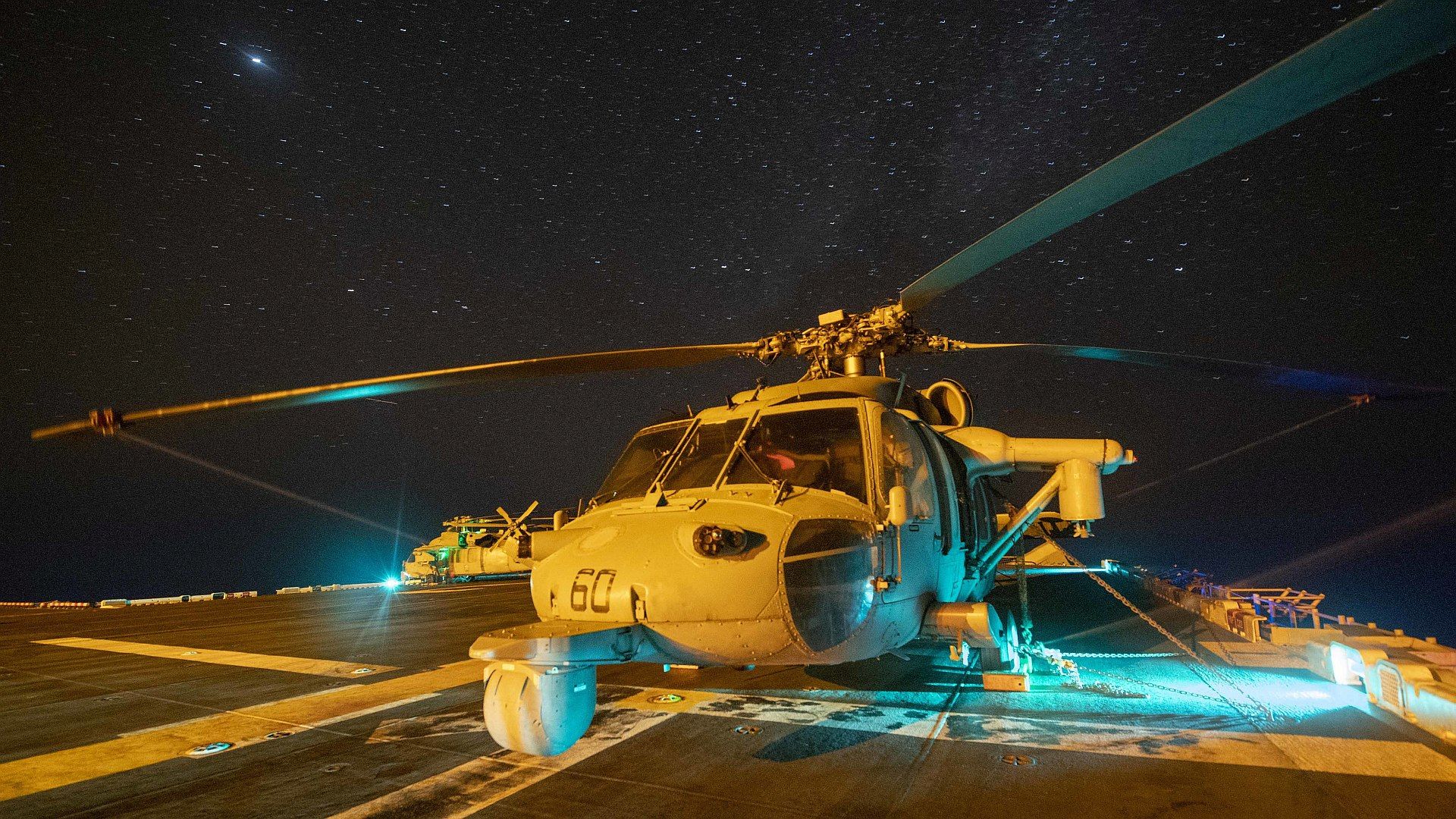
Two B-1B Lancers assigned to Ellsworth Air Force Base, S.D., taxi towards the runway prior to a Bomber Task Force mission at Naval Support Facility Diego Garcia, Nov. 2, 2021. Training outside the United States enables aircrew and Airmen to become familiar with other theaters and airspace, and enhances the enduring skills and relationships necessary to confront a broad range of global challenges in support of the National Defense Strategy. (U.S. Air Force photo by Staff Sgt. Hannah Malone)
AUSTRALIA, Nov. 4, 2021 – Boeing [NYSE:BA] Australia has expanded its flight-test program of the Boeing Airpower Teaming System, with two aircraft successfully completing separate flight missions at the Woomera Range Complex recently.
The first Loyal Wingman aircraft developed with the Royal Australian Air Force (RAAF) demonstrated a range of key characteristics during the test flights to continue to expand the flight envelope. A second aircraft also successfully completed its first flight mission.
“It is so exciting seeing two aircraft in the air as the Loyal Wingman continues to excel in the flight-test program,” said Air Vice-Marshal Cath Roberts, RAAF Head of Air Force Capability. “This opens up significant capability agility for Air Force, particularly with features such as the reconfigurable nose.”
“We’re heavily engaged in the payload development and the element of surprise that it gives us in the battlespace. You never really know what’s in the nose,” said AVM Roberts.
Throughout the flight-test missions, the teams gathered aircraft performance data that will be used to inform and refine the digital twin of the Boeing Airpower Teaming System, with the view to accelerate the aircraft’s development where possible. The digital twin models the system’s entire lifecycle, from design and development to production and sustainment, and contributes to speed and first-time quality.
“We’re in a steady rhythm of flight testing on the way to mission and operational testing, enabling Boeing Australia, RAAF and our Australian industry team of more than 35 companies to progressively advance the flight characteristics and capabilities of the uncrewed teaming system,” said Glen Ferguson, director of Boeing Airpower Teaming System – Australia and International. “I’d like to extend my thanks to our capability partner BAE Systems Australia, and to RUAG Australia for their specific roles in this latest test block.”
The flight tests of aircraft one included the first time the landing gear was raised and engaged. RUAG Australia supplied the landing gear systems to the aircraft, and BAE Systems Australia was integral in the design, supply and support of the flight control and navigation systems tested as part of the flights.
“This is a great achievement for homegrown, Australian autonomous capabilities,” said BAE Systems Australia CEO Gabby Costigan. “Our partnership underpins a shared commitment to develop sovereign technologies and deliver a cutting-edge program for the nation’s defence.”
The first batch of Loyal Wingman aircraft are serving as the foundation for the Boeing Airpower Teaming System being developed for various global defence customers. The aircraft will fly alongside other platforms, using artificial intelligence to team with existing crewed and uncrewed assets to complement mission capabilities..jpg?width=1920&height=1080&fit=bounds)
-
 Main AdminAn AH-1Z Viper helicopter lands at Lamar, Colorado, Nov. 3, 2021. Marines with HMLA-269 trained in a cold-weather, high-altitude environment to increase proficiency in expeditionary advanced basing operations (EABO). HMLA-269 is a subordinate unit of 2nd Marine Aircraft Wing, the aviation combat element of II Marine Expeditionary Force. (U.S. Marine Corps photo by Lance Cpl. Elias E. Pimentel III)
Main AdminAn AH-1Z Viper helicopter lands at Lamar, Colorado, Nov. 3, 2021. Marines with HMLA-269 trained in a cold-weather, high-altitude environment to increase proficiency in expeditionary advanced basing operations (EABO). HMLA-269 is a subordinate unit of 2nd Marine Aircraft Wing, the aviation combat element of II Marine Expeditionary Force. (U.S. Marine Corps photo by Lance Cpl. Elias E. Pimentel III)
A U.S. Air Force E-3 Sentry assigned to the 961st Airborne Air Control Squadron departs after completion of aerial refueling over the Pacific Ocean, Nov. 3, 2021. The E-3 Sentry is able to differentiate between hostile and friendly aircraft operating within the same airspace. (U.S. Air Force photo by Senior Airman Jessi Monte)
U.S. Air Force F-16 Fighting Falcons assigned to the 510th Fighter Squadron take flight during a base defense exercise at Aviano Air Base, Italy, Nov. 4, 2021. The exercise, Fighting Wyvern, was designed to increase overall readiness of Airmen to respond to a variety of threats in a degraded or contaminated environment to safeguard and execute the 31st Fighter Wing’s mission. (U.S. Air Force photos by Senior Airman Thomas S. Keisler IV)

U.S. Air Force Senior Airman Skylar Solis, a crew chief assigned to the 748th Aircraft Maintenance Squadron, communicates with an F-15C Eagle pilot prior to take-off during Agile Combat Employment exercise Castle Forge at Royal Air Force Mildenhall, England, Nov. 3, 2021. Agile Combat Employment enables U.S. forces in Europe to operate from locations with varying levels of capacity and support, ensuring Airmen and aircrews are postured to deliver lethal combat power. (U.S. Air Force photo by Senior Airman Koby I. Saunders)
U.S. Air Force Capt. Taylor Bye, 75th Fighter Squadron standardization and evaluation chief, prepares to enter the A-10C Thunderbolt II tail-995 cockpit at Moody Air Force Base, Georgia, Nov. 3, 2021. During an in-flight emergency in April of 2020, Bye was forced to land the aircraft without landing gear or a canopy. This was her first sortie in tail-995 since its repairs. (U.S. Air Force photo by Airman 1st Class Briana Beavers)
The last C-130H Hercules, formally assigned to the 779th Expeditionary Airlift Squadron, departs Ali Al Salem Air Base, Kuwait, Nov. 6, 2021. The 779th was redesignated to the 61st EAS which will fly the upgraded C-130J Super Hercules. The C-130H is a legacy aircraft model that conducted airlift tactical order operations in U.S. Central Command’s area of responsibility. (U.S. Air Force photo by Senior Airman Michael S. Murphy)
SOUTH CHINA SEA (Nov. 5, 2021) An F/A-18E Super Hornet, assigned to the “Stingers” of Strike Fighter Squadron (VFA) 113, is moved across the flight deck of Nimitz-class aircraft carrier USS Carl Vinson (CVN 70), Nov. 5, 2021. Carl Vinson Carrier Strike Group is on a scheduled deployment in the U.S. 7th Fleet area of operations to enhance interoperability through alliances and partnerships while serving as a ready-response force in support of a free and open Indo-Pacific region. (U.S. Navy photo by Mass Communication Specialist 2nd Class Haydn Smith)
SOUTH CHINA SEA (Nov. 5, 2021) An F/A-18E Super Hornet, assigned to the “Stingers” of Strike Fighter Squadron (VFA) 113, approaches the flight deck of Nimitz-class aircraft carrier USS Carl Vinson (CVN 70), Nov. 5, 2021. Carl Vinson Carrier Strike Group is on a scheduled deployment in the U.S. 7th Fleet area of operations to enhance interoperability through alliances and partnerships while serving as a ready-response force in support of a free and open Indo-Pacific region. (U.S. Navy photo by Mass Communication Specialist 3rd Class Caden Richmond)
A 33rd Rescue Squadron HH-60G Pave Hawk helicopter flies over the Pacific Ocean in support of Remote Island Disaster Exercise 2021, Nov. 2, 2021. The HH-60G Pave Hawk is a highly modified version of the U.S. Army Black Hawk helicopter, which features an upgraded communications and navigation suite. (U.S. Air Force photo by Airman 1st Class Stephen Pulter)
11.5.21.
The RAAF welcomes one of its newest, of four F-35A Lightnings, which touched down recently at RAAF Base Williamtown fresh from the US.
With these new additions the RAAF now has 41 of the fifth generation stealth fighters here in Australia, further advancing our capability in combat, strike and offensive air support.
Photo by CPL Melina Young.
11/5/2021
An unmanned air vehicle demonstrated successful airborne recovery during the DARPA Gremlins program’s latest flight test deployment last month. During the deployment, two X-61 Gremlin Air Vehicles (GAV) successfully validated all autonomous formation flying positions and safety features before one GAV ultimately demonstrated airborne recovery to a C-130.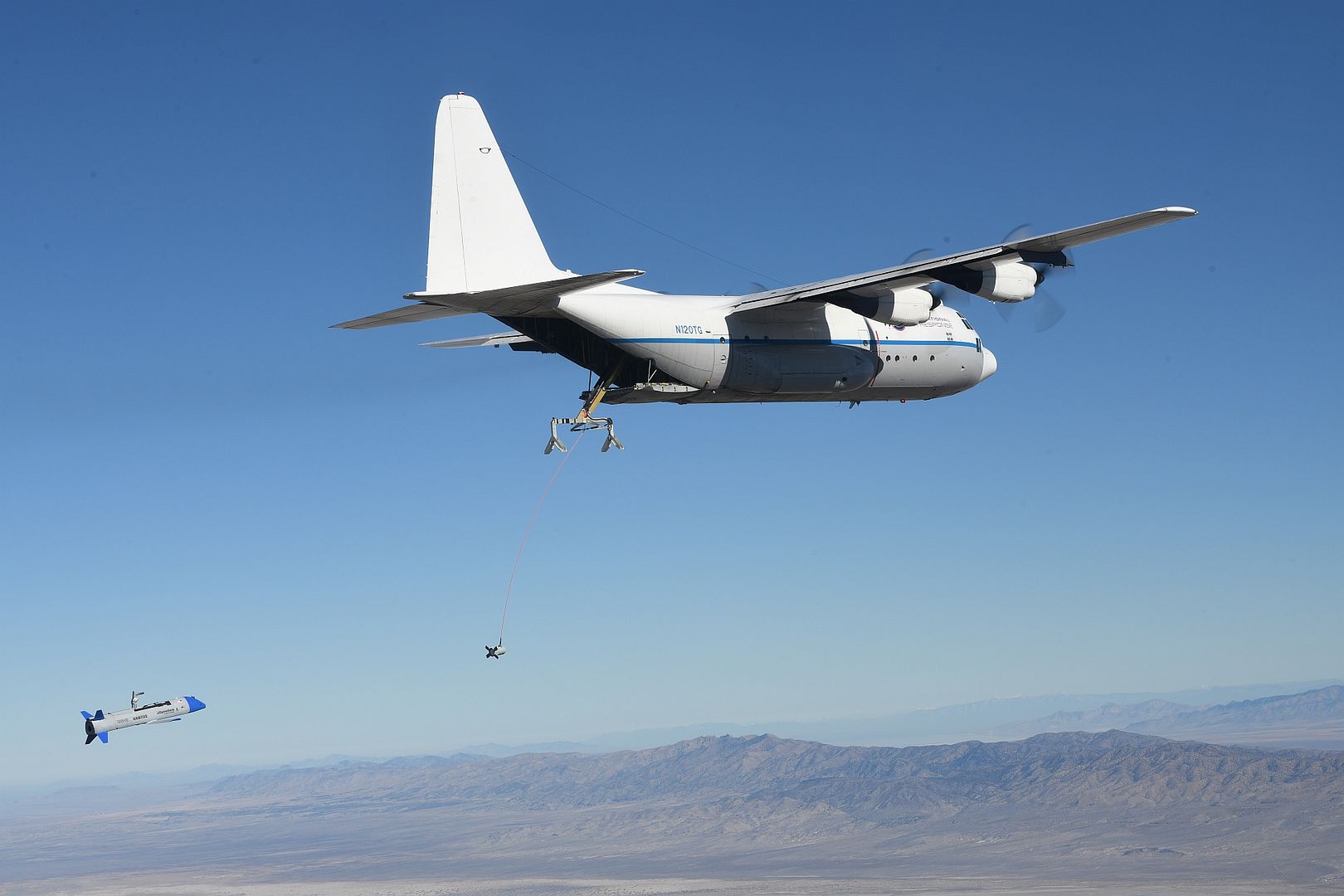
“This recovery was the culmination of years of hard work and demonstrates the feasibility of safe, reliable airborne recovery,” said Lt. Col. Paul Calhoun, program manager for Gremlins in DARPA’s Tactical Technology Office. “Such a capability will likely prove to be critical for future distributed air operations.”
During the final experiment, the team refurbished an X-61 vehicle and conducted a second flight within 24 working-hours. In addition, many hours of data were collected over four flights including air vehicle performance, aerodynamic interactions between the recovery bullet and GAV, and contact dynamics for airborne retrieval. Unfortunately, one GAV was destroyed during the flight tests.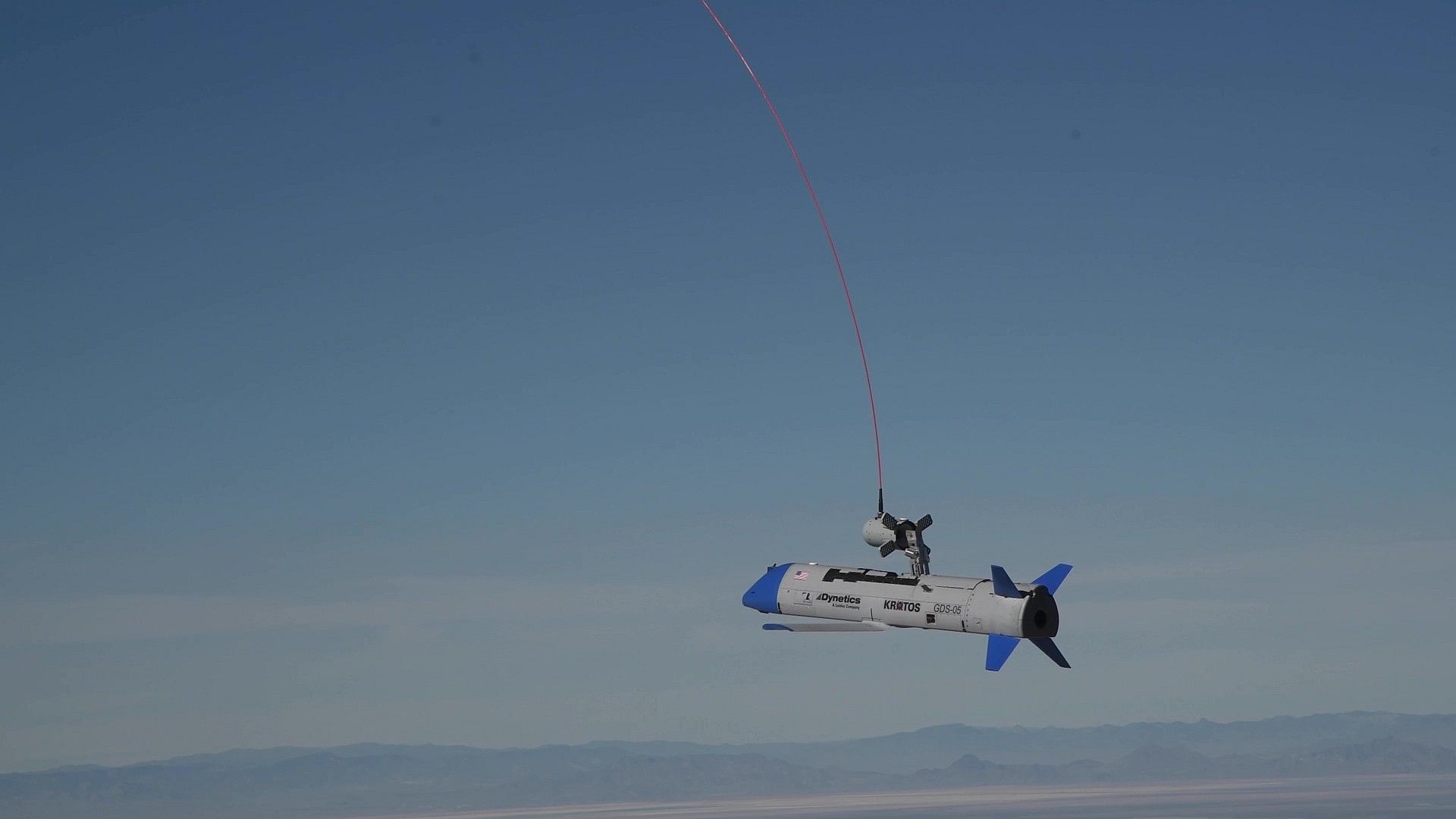
“Airborne recovery is complex,” said Calhoun. “We will take some time to enjoy the success of this deployment, then get back to work further analyzing the data and determining next steps for the Gremlins technology.”
Safe, effective, and reliable air recoveries promise to dramatically expand the range and potential uses of unmanned air vehicles in conflict situations. The GAVs can be equipped with a variety of sensors and other mission-specific payloads. They can also be launched from various types of military aircraft, keeping manned platforms safely beyond the range of adversary defenses. After air retrieval, the GAVs can be refurbished by ground crews to prepare them for another mission within 24 hours.
Dynetics, a wholly owned subsidiary of Leidos, is developing the Gremlin vehicles.
-
 Main AdminOne of two new C-130J Super Hercules aircraft arrives at the Kentucky Air National Guard Base in Louisville, Ky., Nov. 6, 2021, ushering in a new era of aviation for the 123rd Airlift Wing. The state-of-the-art transports are among eight the wing will receive over the next 11 months to replace eight aging C-130 H-model aircraft, which were built in 1992 and have seen duty all over the world. (U.S. Air National Guard photo by Dale Greer)
Main AdminOne of two new C-130J Super Hercules aircraft arrives at the Kentucky Air National Guard Base in Louisville, Ky., Nov. 6, 2021, ushering in a new era of aviation for the 123rd Airlift Wing. The state-of-the-art transports are among eight the wing will receive over the next 11 months to replace eight aging C-130 H-model aircraft, which were built in 1992 and have seen duty all over the world. (U.S. Air National Guard photo by Dale Greer)
A B-52H Stratofortress from Barksdale Air Force Base sits on the flight-line during Global Thunder 22 operations on Nov. 3, 2021 at Minot AFB, N.D. Global Thunder 22 is a USSTRATCOM exercise designed to provide training opportunities, test, and validate command, control, and operational procedures. (U.S. Air Force photo by Senior Airman Michael Richmond)
-
 Main AdminU.S. Marines flying a UH-1Y Venom attached to Marine Medium Tiltrotor Squadron 165 (Reinforced), 11th Marine Expeditionary Unit, flies past HMS Queen Elizabeth while a Royal Navy pilot with the United Kingdom’s 617 Squadron taxis on the flight deck in the Arabian Sea on November 8, 2021. Simultaneously, Marine Fighter Attack Squadron 211 cross-decked F-35B Lightning II’s to the USS Essex (LHD 2). The evolution demonstrated increased interoperability, information sharing, and expanded access across the region as allies, as well as credible and capable forces operating in the U.S. 5th Fleet area of operations.
Main AdminU.S. Marines flying a UH-1Y Venom attached to Marine Medium Tiltrotor Squadron 165 (Reinforced), 11th Marine Expeditionary Unit, flies past HMS Queen Elizabeth while a Royal Navy pilot with the United Kingdom’s 617 Squadron taxis on the flight deck in the Arabian Sea on November 8, 2021. Simultaneously, Marine Fighter Attack Squadron 211 cross-decked F-35B Lightning II’s to the USS Essex (LHD 2). The evolution demonstrated increased interoperability, information sharing, and expanded access across the region as allies, as well as credible and capable forces operating in the U.S. 5th Fleet area of operations.
(Photo by 1st Lt. Zachary Bodner)
U.S. Marines flying an MV-22B Osprey and UH-1Y Venom attached to Marine Medium Tiltrotor Squadron 165 (Reinforced), 11th Marine Expeditionary Unit and a Royal Navy 845 Squadron Merlin MK IV conduct carrier deck landings on HMS Queen Elizabeth in the Arabian Sea on November 8, 2021. Simultaneously, Marine Fighter Attack Squadron 211 cross-decked F-35B Lightning II’s to the USS Essex (LHD 2). The evolution demonstrated increased interoperability, information sharing, and expanded access across the region as allies, as well as credible and capable forces operating in the U.S. 5th Fleet area of operations.
(Photo by 1st Lt. Zachary Bodner)
U.S. Marines flying a UH-1Y Venom attached to Marine Medium Tiltrotor Squadron 165 (Reinforced), 11th Marine Expeditionary Unit, flies past HMS Queen Elizabeth while a Royal Navy pilot with the United Kingdom’s 617 Squadron prepares to launch from the flight deck in the Arabian Sea on November 8, 2021. Simultaneously, Marine Fighter Attack Squadron 211 cross-decked F-35B Lightning II’s to the USS Essex (LHD 2). The evolution demonstrated increased interoperability, information sharing, and expanded access across the region as allies, as well as credible and capable forces operating in the U.S. 5th Fleet area of operations.
(Photo by 1st Lt. Zachary Bodner)
U.S. Marines flying an AH-1Z Viper attached to Marine Medium Tiltrotor Squadron 165 (Reinforced), 11th Marine Expeditionary Unit conduct carrier deck landings on HMS Queen Elizabeth in the Arabian Sea on November 8, 2021. Simultaneously, Marine Fighter Attack Squadron 211 cross-decked F-35B Lightning II’s to the USS Essex (LHD 2). The evolution demonstrated increased interoperability, information sharing, and expanded access across the region as allies, as well as credible and capable forces operating in the U.S. 5th Fleet area of operations.
(Photo by 1st Lt. Zachary Bodner)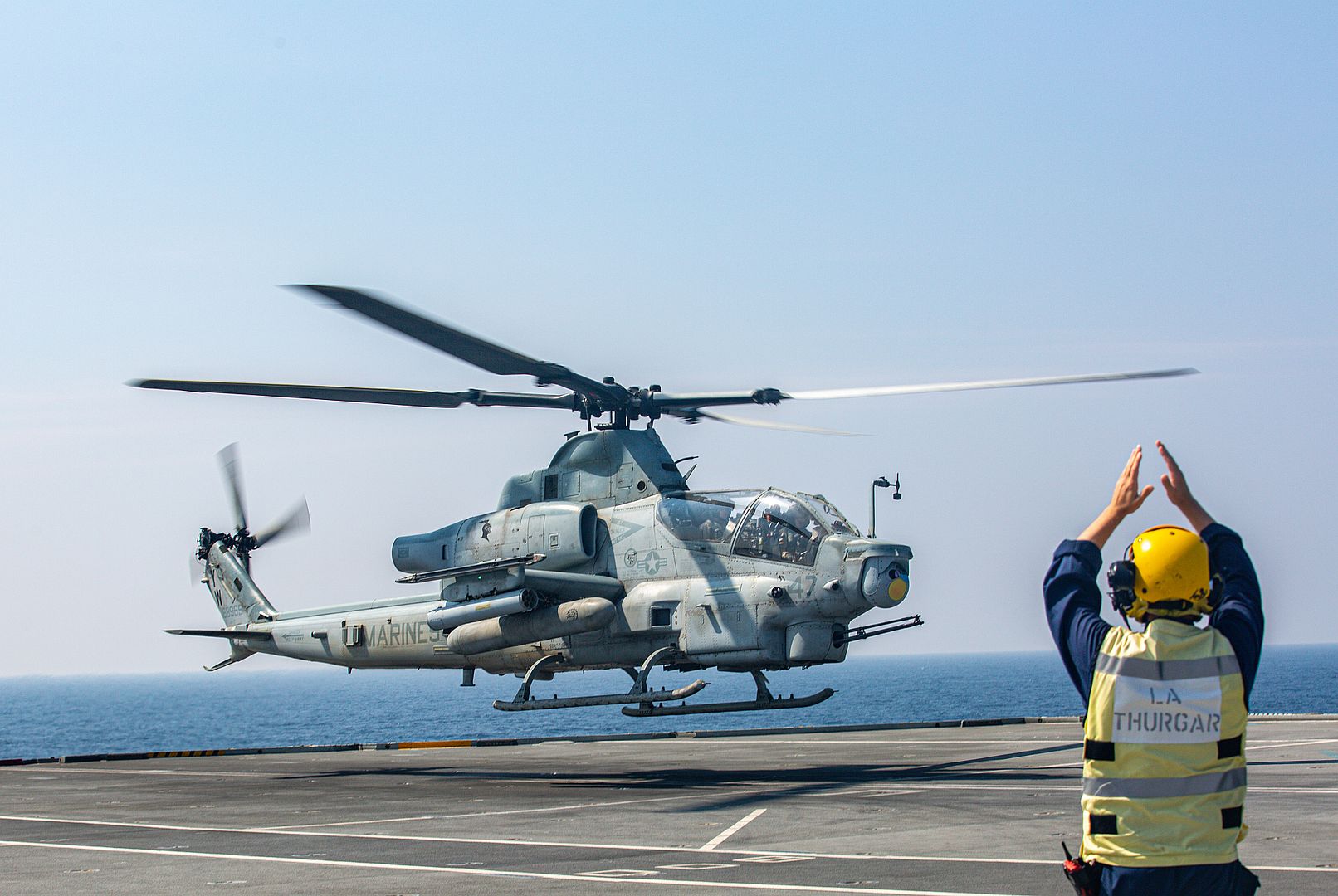
U.S. Marines flying an MV-22B Osprey attached to Marine Medium Tiltrotor Squadron 165 (Reinforced), 11th Marine Expeditionary Unit, conduct carrier deck landings on HMS Queen Elizabeth while a Marine with Marine Fighter Attack Squadron (VMFA211) 211 prepares to launch from the flight deck in the Arabian Sea on November 8, 2021. Simultaneously, VMFA-211 cross-decked F-35B Lightning II’s to the USS Essex (LHD 2). The evolution demonstrated increased interoperability, information sharing, and expanded access across the region as allies, as well as credible and capable forces operating in the U.S. 5th Fleet area of operations.
(Photo by 1st Lt. Zachary Bodner)
GULF OF OMAN (Nov. 8, 2021) Sailors prepare to chock and chain a Royal Navy Merlin Mk4 attached to 845 Naval Air Squadron, deployed with the Royal Navy aircraft carrier HMS Queen Elizabeth, on the flight deck of the amphibious assault ship USS Essex (LHD 2) during an interoperability exercise with Queen Elizabeth, Nov. 8. Essex and the 11th Marine Expeditionary Unit are deployed to the U.S. 5th Fleet area of operations in support of naval operations to ensure maritime stability and security in the Central Region, connecting the Mediterranean and the Pacific through the western Indian Ocean and three strategic choke points. (U.S. Navy photo by Mass Communication Specialist 2nd Class John McGovern)
GULF OF OMAN (Nov. 8, 2021) F-35B Lightning II attached to Marine Fighter Attack Squadron (VMFA) 211, deployed with the British Royal Navy aircraft carrier HMS Queen Elizabeth, takes off of the flight deck of the amphibious assault ship USS Essex (LHD 2) during an interoperability exercise with Queen Elizabeth, Nov. 8. Essex and the 11th Marine Expeditionary Unit are deployed to the U.S. 5th Fleet area of operations in support of naval operations to ensure maritime stability and security in the Central Region, connecting the Mediterranean and the Pacific through the western Indian Ocean and three strategic choke points. (U.S. Navy photo by Mass Communication Specialist 2nd Class Wesley Richardson)
Four F-22 Raptors assigned to the 1st Fighter Wing, Joint Base Langley-Eustis, Virginia, prepare to depart to train with F-35A Lightning IIs from the 134th Fighter Squadron, Vermont Air National Guard at the South Burlington Air National Guard Base, South Burlington, Vermont, Nov. 7, 2021. This integrated training opportunity with the F-35s and F-22s allows fifth gen fighters to perfect their skills and be more effective in hostile environments. (U.S. Air National Guard photo by Master Sgt. Ryan Campbell)
A 5th Security Forces Squadron Airman moves a heater out of the way of a B-52H Stratofortress at Minot Air Force Base, N.D. Nov. 5, 2021 during exercise Global Thunder 22. The Security Forces Airmen play a vital role in protecting the aircraft and the nation’s nuclear enterprise day in and out, enabling readiness exercises like GT22, a U.S. Strategic Command exercise focused on testing the nation’s nuclear command and control processes. (U.S. Air Force photo by Senior Airman Caleb S. Kimmell)
DUBAI, United Arab Emirates, Nov. 9, 2021 /PRNewswire/ -- The new Boeing [NYSE:BA] 777X arrived at Dubai World Central at 14:02 p.m. (GST) today, ahead of the upcoming Dubai Airshow. The airplane will be on static display and featured in the show's flying program starting November 14.
The 777-9 flight test airplane made a nearly 15-hour nonstop flight from Seattle's Boeing Field to Dubai, the first international flight and longest flight to date for the 777X as it continues to undergo a rigorous test program.
Building on the best of the industry-leading 777 and 787 Dreamliner families, the 777-9 will be the world's largest and most efficient twin-engine jet, delivering 10% better fuel use, emissions and operating costs than the competition and an exceptional passenger experience. The 777X family has a total of 351 orders and commitments from eight leading customers around the globe. First delivery of the airplane is expected in late 2023.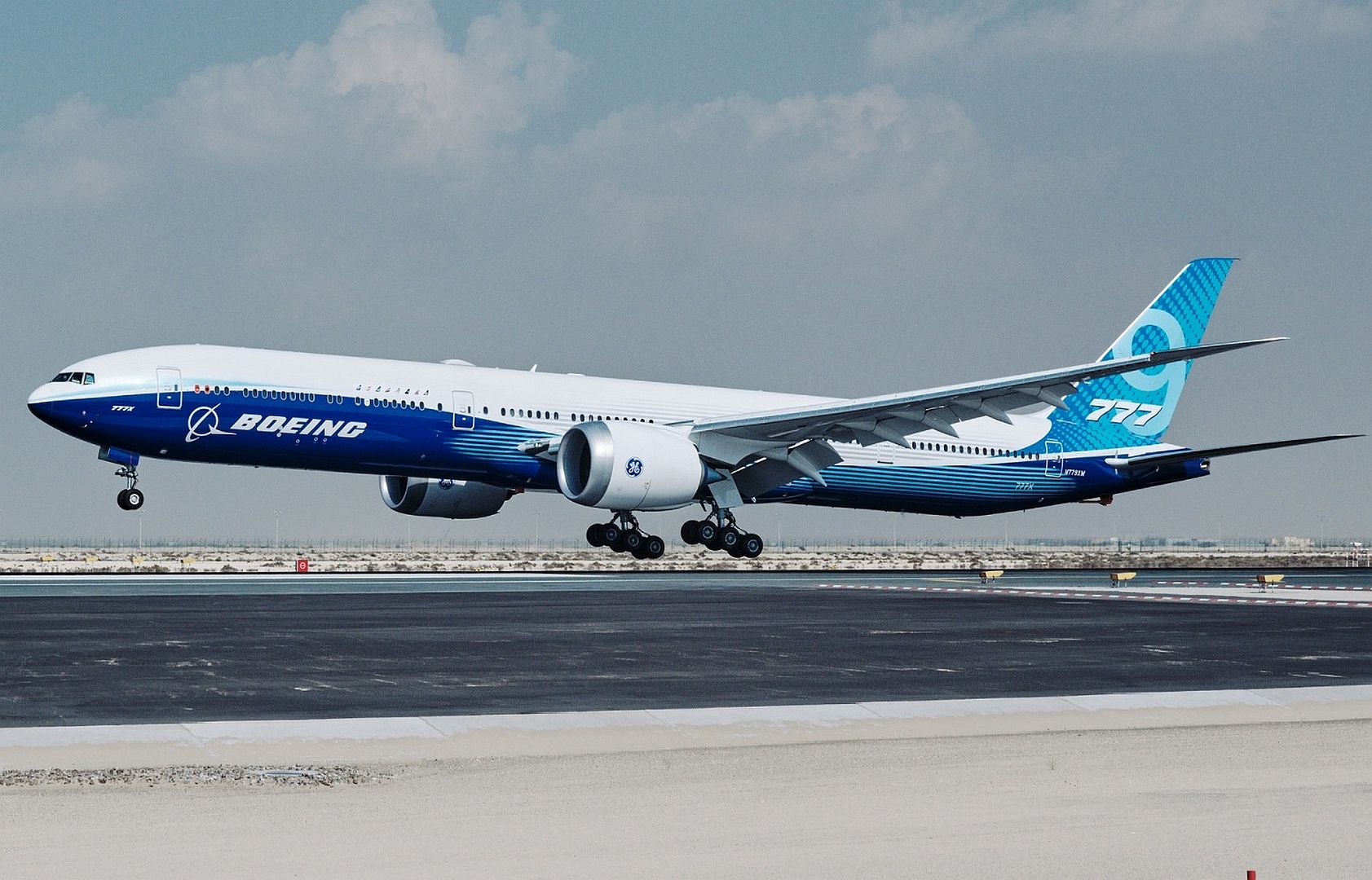
RAF Typhoon jets and a Voyager air-to-air refueller arrived at the Air Exercise area in Oman this week to prepare for Exercise MAGIC CARPET, an annual exercise with the Royal Air Force of Oman (RAFO).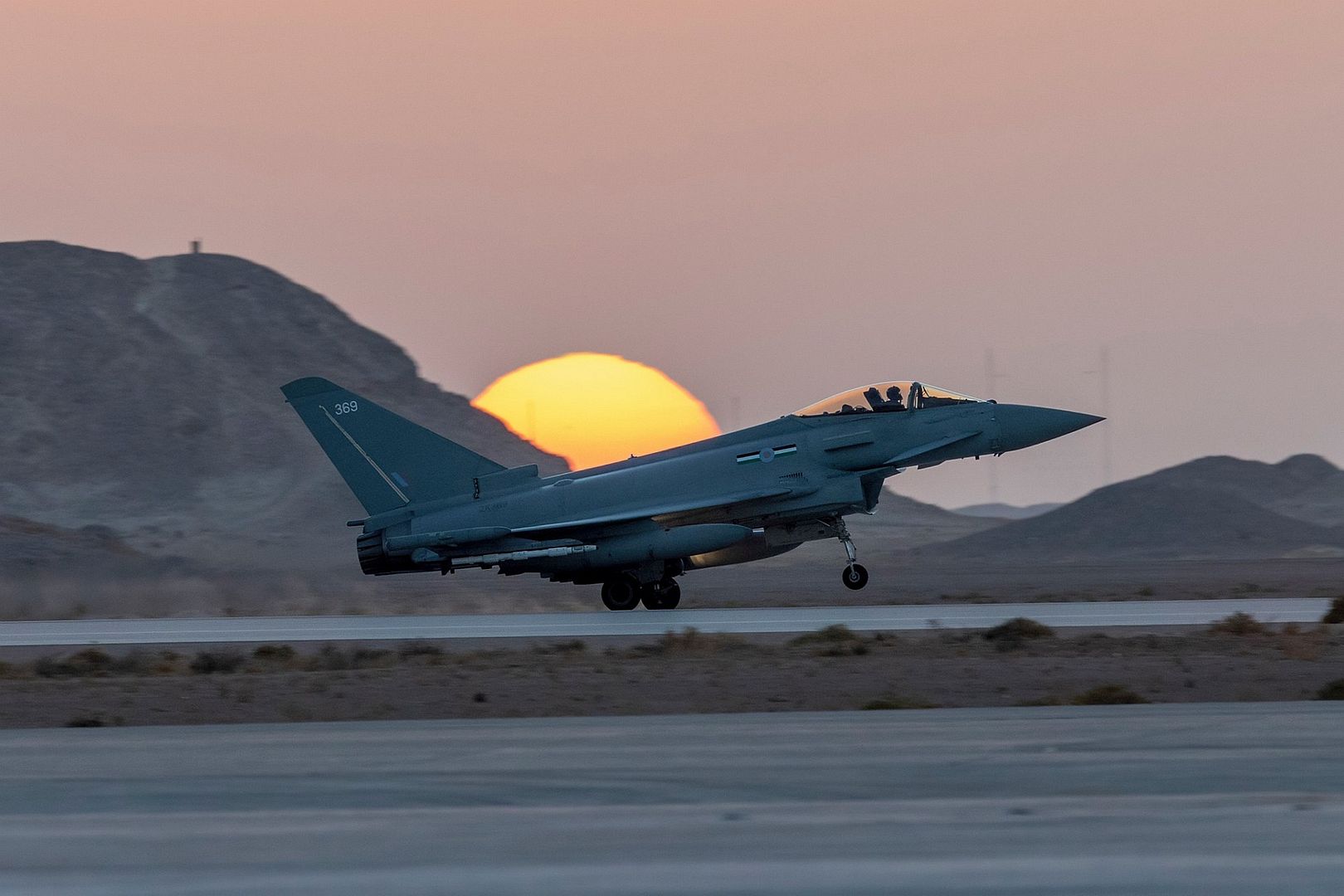
The Typhoons, II(AC) Squadron RAF Lossiemouth and 12 Squadron Royal Air Force Coningsby and a Voyager with over 300 RAF support personnel have now started the two-week exercise in the Air Exercise area. The Royal Air Force will be working with the Royal Air Force of Oman to deliver challenging training to RAF and Omani pilots, comprising of air-to-ground missions and air-to-air refuelling of aircraft.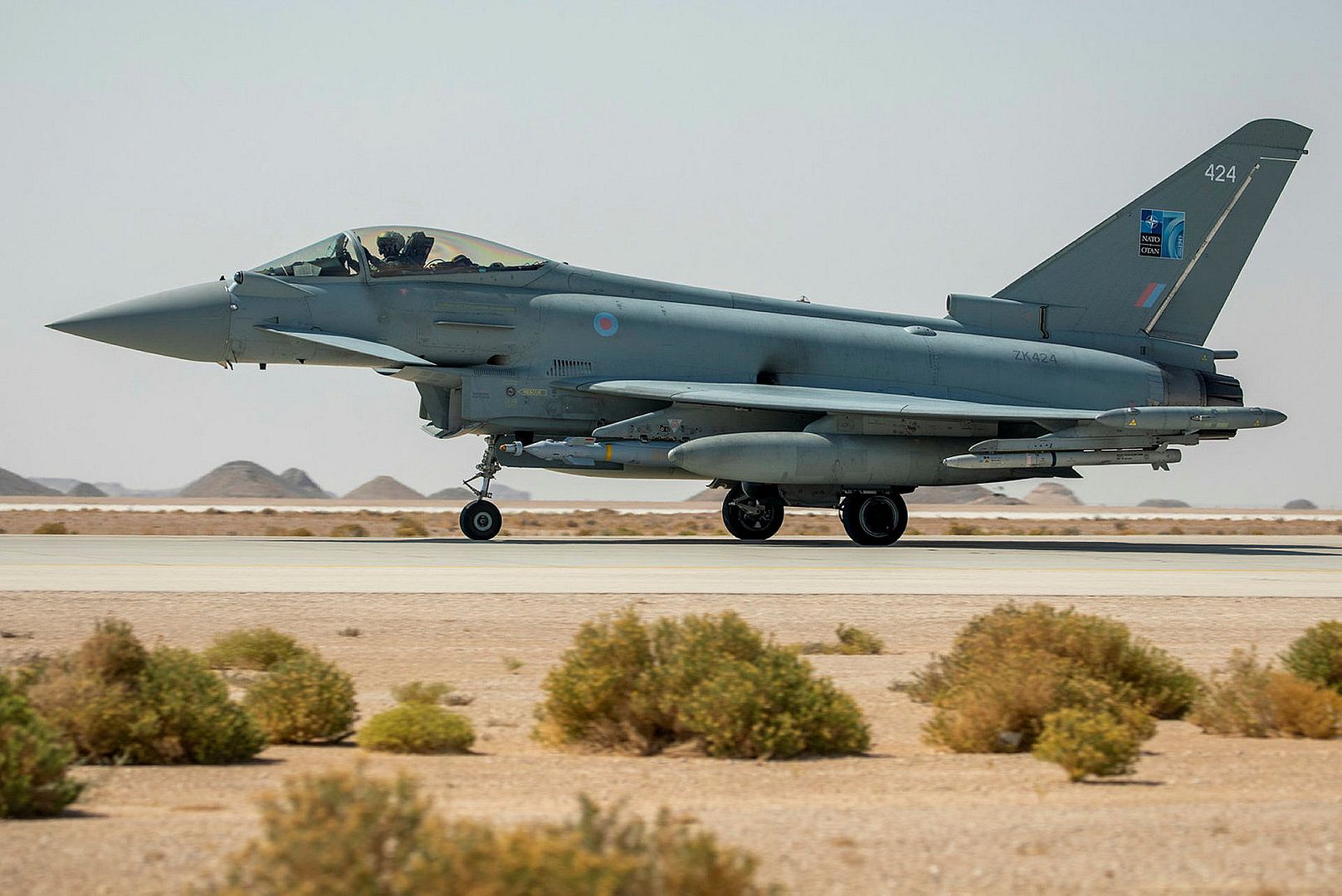
This exercise demonstrates the UK’s enduring commitment to working with Oman and Gulf partners on promoting regional security and stability.
(Photos courtesy of the RAF)
-
 Main AdminA Japanese P-3 Orion from the Japan Self-Defense Force Base Djibouti, flies over Camp Lemonnier, Djibouti, Nov. 11, 2021. The mission joined a Bomber Task Force mission that represented the international participants' collective commitment to stability and security in the Horn of Africa, highlighted Djibouti as a leading security partner in the region, and exercised U.S. ability to operate in and through a variety of airspaces. The BTF mission coincided with Combined Joint Task Force-Horn of Africa’s Allied Appreciation Day event where approximately 200 guests and senior leaders representing Djibouti, France, the U.K., Spain, Japan, Italy and the U.S. came together to witness the low approach and participate in a variety of interactive and static demonstrations. The event showcased the combined military strength present in Djibouti and also served to honor the shared partnerships, history and devotion to peace. (U.S. Army photo by Pfc. Gauret Stearns)
Main AdminA Japanese P-3 Orion from the Japan Self-Defense Force Base Djibouti, flies over Camp Lemonnier, Djibouti, Nov. 11, 2021. The mission joined a Bomber Task Force mission that represented the international participants' collective commitment to stability and security in the Horn of Africa, highlighted Djibouti as a leading security partner in the region, and exercised U.S. ability to operate in and through a variety of airspaces. The BTF mission coincided with Combined Joint Task Force-Horn of Africa’s Allied Appreciation Day event where approximately 200 guests and senior leaders representing Djibouti, France, the U.K., Spain, Japan, Italy and the U.S. came together to witness the low approach and participate in a variety of interactive and static demonstrations. The event showcased the combined military strength present in Djibouti and also served to honor the shared partnerships, history and devotion to peace. (U.S. Army photo by Pfc. Gauret Stearns)
APRA HARBOR (Nov. 11, 2021) Nimitz-class aircraft carrier USS Carl Vinson (CVN 70) transits to Naval Base Guam for a port visit, Nov. 11, 2021. The arrival of Carl Vinson Carrier Strike Group (VINCSG) marks the first time that a carrier strike group with the advanced airwing capabilities of the F-35C Lightning II and Navy CMV-22B Osprey have visited Guam. VINCSG is on a scheduled deployment in the U.S. 7th Fleet area of operations to enhance interoperability through alliances and partnerships while serving as a ready-response force in support of a free and open Indo-Pacific region. (U.S. Navy photo by Mass Communication Specialist 3rd Class Tyler Wheaton)
JAVA SEA (Nov. 9, 2021) A P-8A Poseidon, assigned to "The Golden Swordsmen” of Patrol Squadron (VP) 47 participates in Cooperation Afloat and Readiness and Training (CARAT) Indonesia 2021. In its 27th year, the CARAT series is comprised of multinational exercises, designed to enhance U.S. and partner navies’ abilities to operate together in response to traditional and non-traditional maritime security challenges in the Indo-Pacific region. (U.S. Navy photo by Mass Communication Specialist 3rd Class Andrew Langholf/released)
11.11.2021.
More than 70 times, MiG-31BM fighters from the duty forces of the mixed air regiment of the Troops and Forces in the North-East of Russia rose into the air to escort foreign aircraft in 2021.
Interceptor fighters of the Pacific Fleet rose into the air upon detection of air targets approaching the Russian state border by means of objective control over neutral waters.
From the airfield in Chukotka, the crews of fighter-interceptors rose more than 10 times to escort foreign aircraft over the Bering and Chukchi Seas.
The crews of the MiG-31BM identify aerial targets by visual contact or with the help of avionics and escort them during the entire flight near the state border. The fighter jets fly over the waters of the Pacific and Arctic oceans and their seas in strict accordance with international rules for the use of airspace.
Combat alert duty with MiG-31BM fighters is carried out around the clock to prevent violations of the state border in the airspace in the North-East of Russia.
(Photo courtesy of the Ministry of Defence of the Russian Federation}
-
3 years agoTue Nov 16 2021, 09:24pmDuggy
 Main AdminAn LC-130 "Skibird" ski-equipped aircraft assigned to the New York Air National Guard's 109th Airlift Wing, leaves Stratton Air National Guard Base in Scotia, New Yoirk, heading to Antarctica on Nov. 15, 2021. The wing flies the largest ski-equipped aircraft in the world and supports National Science Foundation research in Antarctica. The wing is deploying five aircraft and 184 Airmen on the missions this year. (U.S. Air National Guard photo by Senior Master Sgt. William Gizara)
Main AdminAn LC-130 "Skibird" ski-equipped aircraft assigned to the New York Air National Guard's 109th Airlift Wing, leaves Stratton Air National Guard Base in Scotia, New Yoirk, heading to Antarctica on Nov. 15, 2021. The wing flies the largest ski-equipped aircraft in the world and supports National Science Foundation research in Antarctica. The wing is deploying five aircraft and 184 Airmen on the missions this year. (U.S. Air National Guard photo by Senior Master Sgt. William Gizara)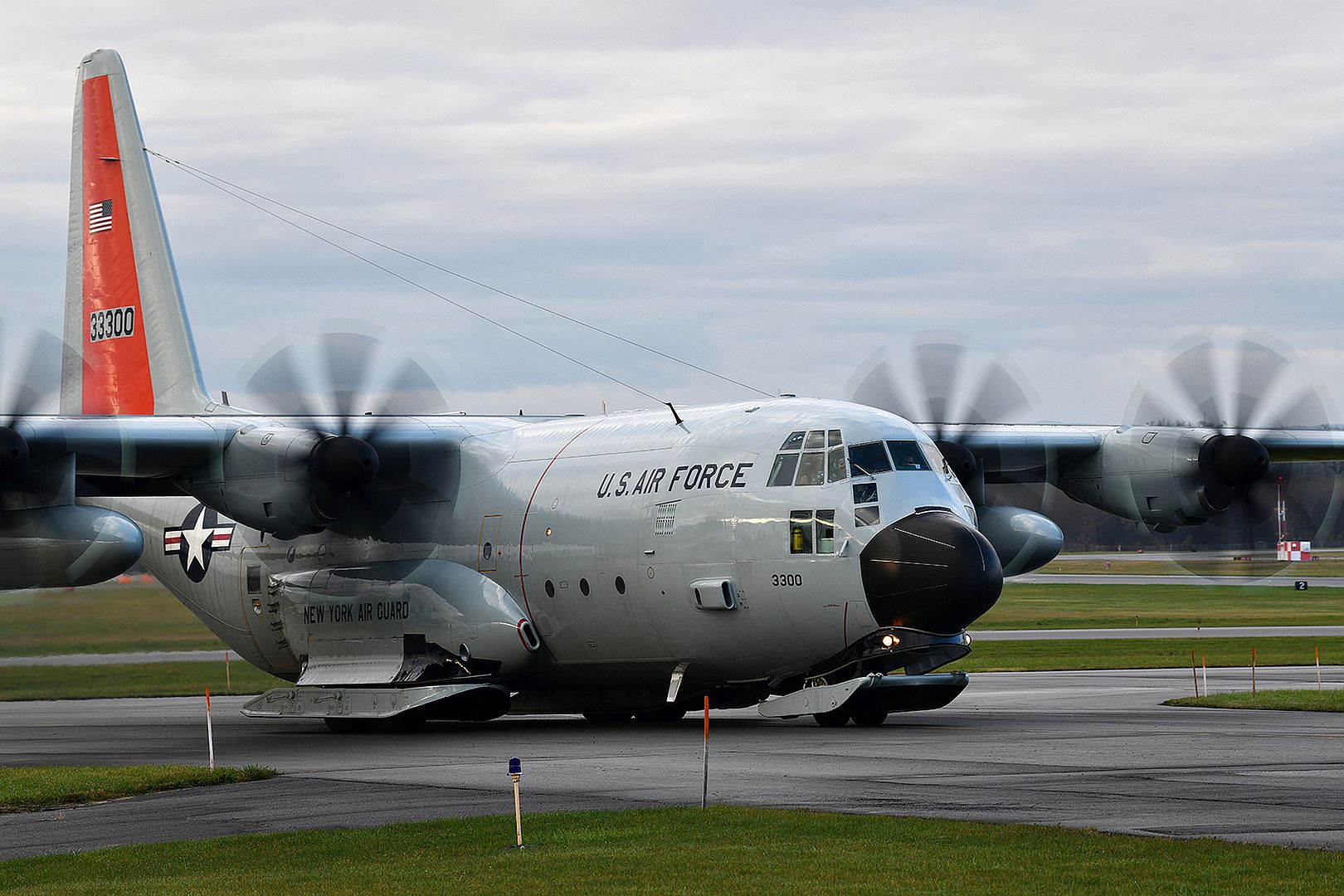
PACIFIC OCEAN (Nov. 10, 2021) An F-35C Lightning II, assigned to Marine Wing Fighter Attack Squadron (VMFA) 314, lands on the flight deck of the aircraft carrier USS Abraham Lincoln (CVN 72). Abraham Lincoln is underway conducting routine operations in the U.S. 3rd Fleet. (U.S. Marine Corps photo by 1stLt. Charles Allen/Released)_314_lands_on_the_flight_deck_of_the_aircraft_carrier_USS_Abraham_Lincoln.jpg?width=1920&height=1080&fit=bounds)
INDIAN OCEAN (Nov. 12, 2021) A French Aerospatiale SA 330 Puma helicopter flies above the Expeditionary Sea Base USS Hershel "Woody" Williams (ESB 4), Nov. 12, 2021. Hershel "Woody" Williams is on a scheduled deployment in the U.S. Sixth Fleet area of operations in support of U.S. national security interests in Europe and Africa. (U.S. Navy photo by Mass Communication Specialist 3rd Class Malachi Lakey/Released)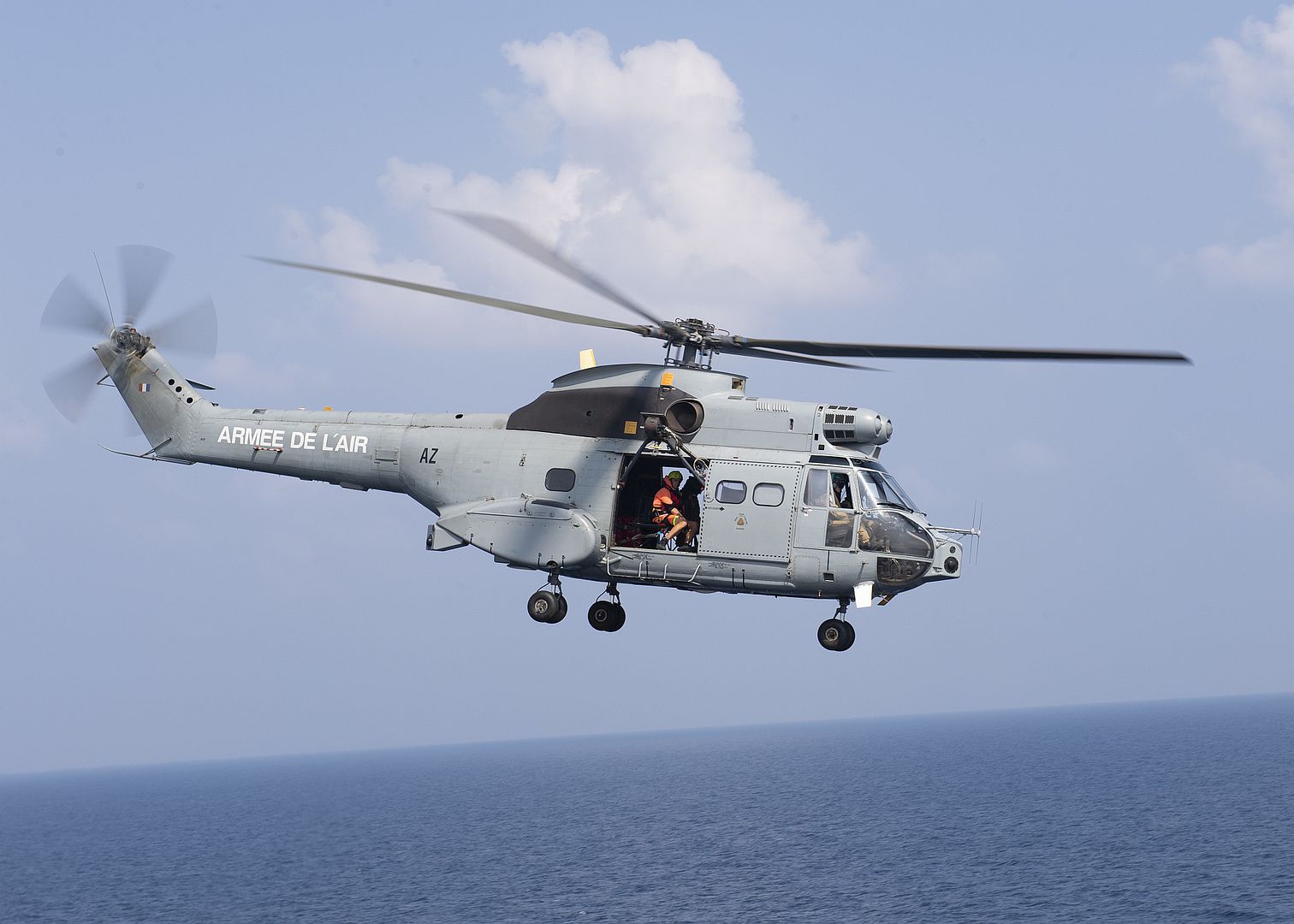
An A-10 Thunderbolt II, assigned to the 175th Wing, Warfield Air National Guard Base, Middle River, Maryland, is launched out for a Green Flag-West 22-02 mission, at Nellis Air Force Base, Nevada, Nov. 8, 2021. Green Flag-West is an advanced realistic air-to-surface training exercise conducted in conjunction with the U.S. Army National Training Center exercises at Fort Irwin, California. (U.S. Air Force photos by William R. Lewis)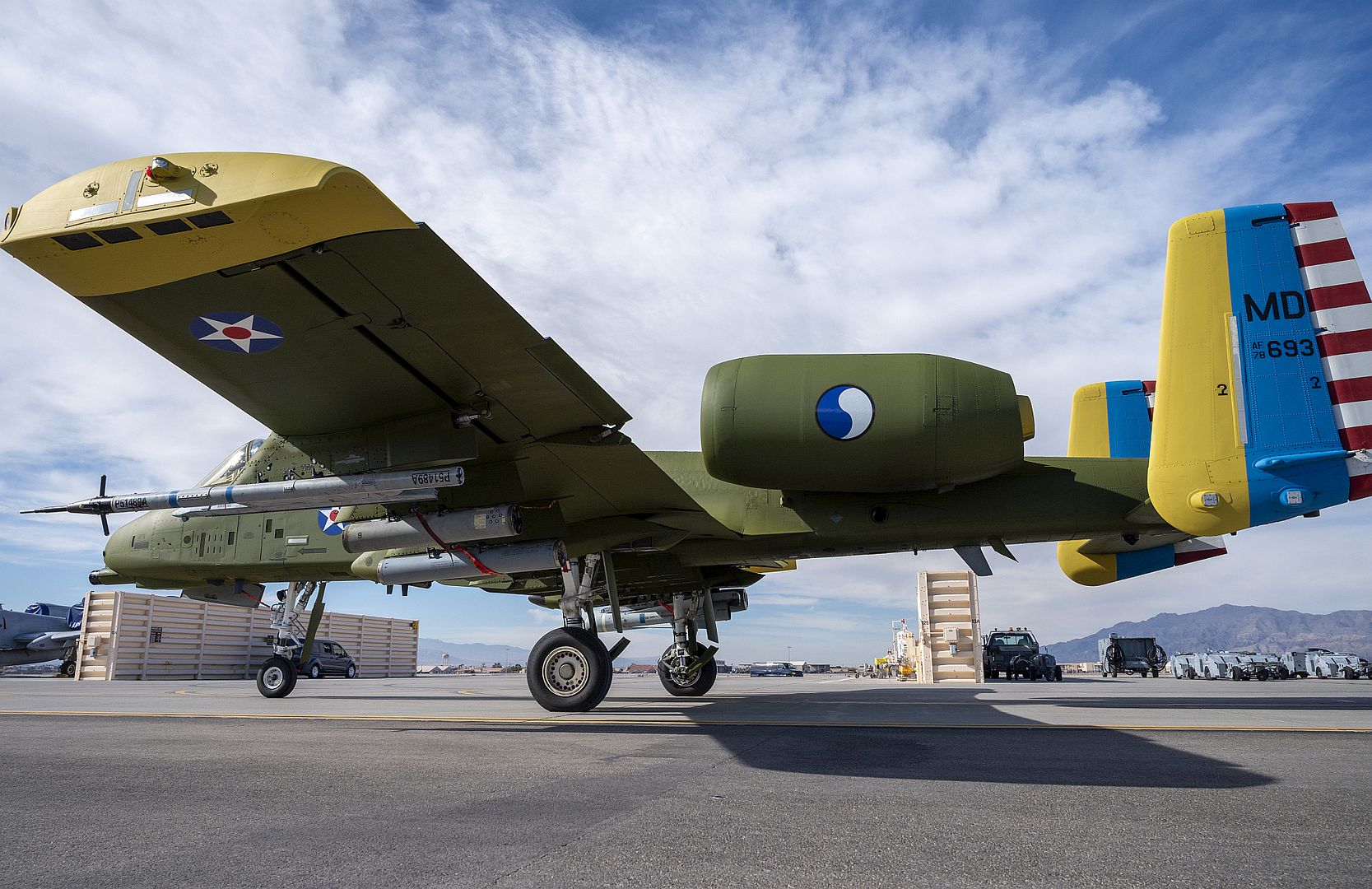
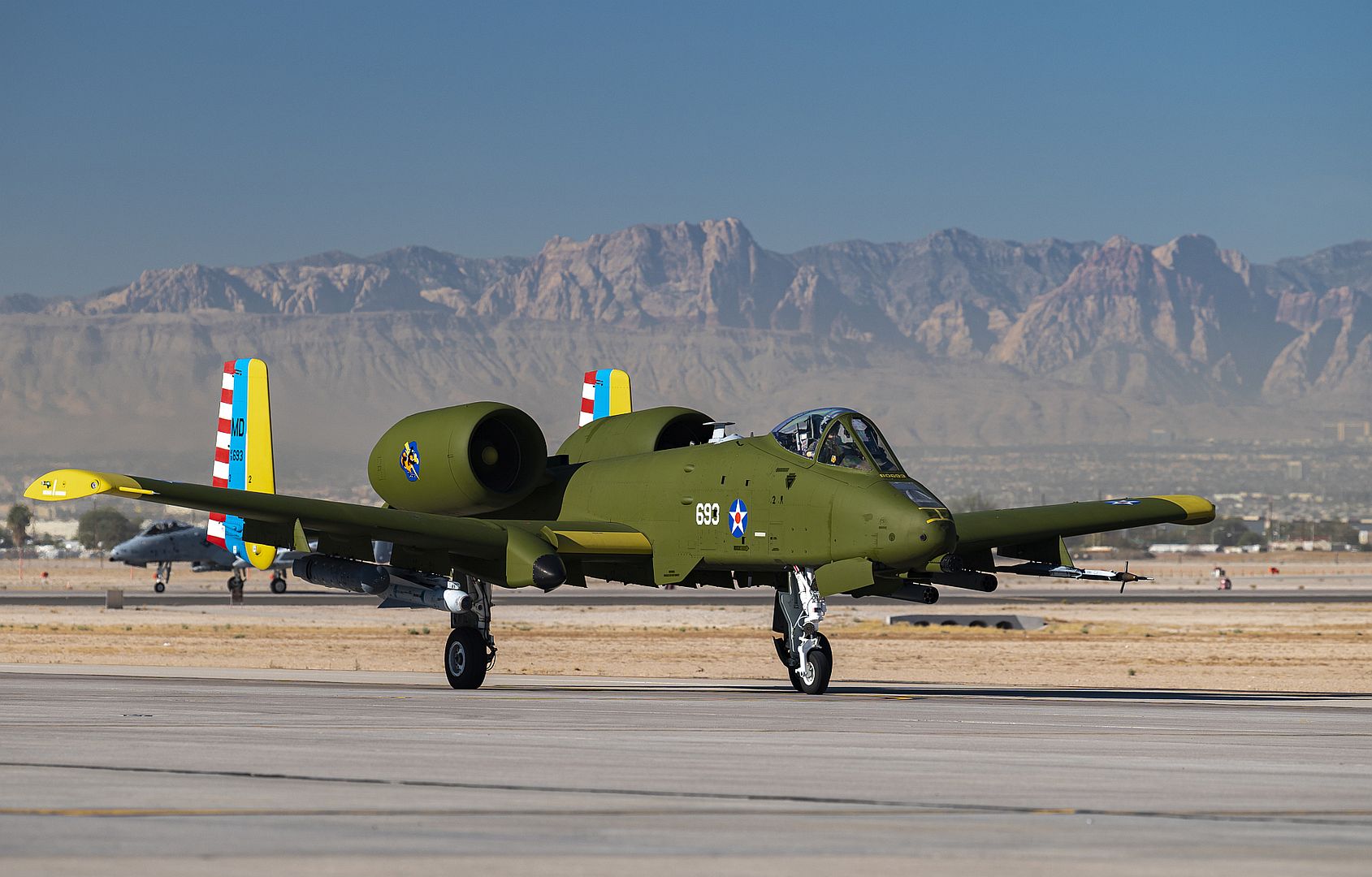
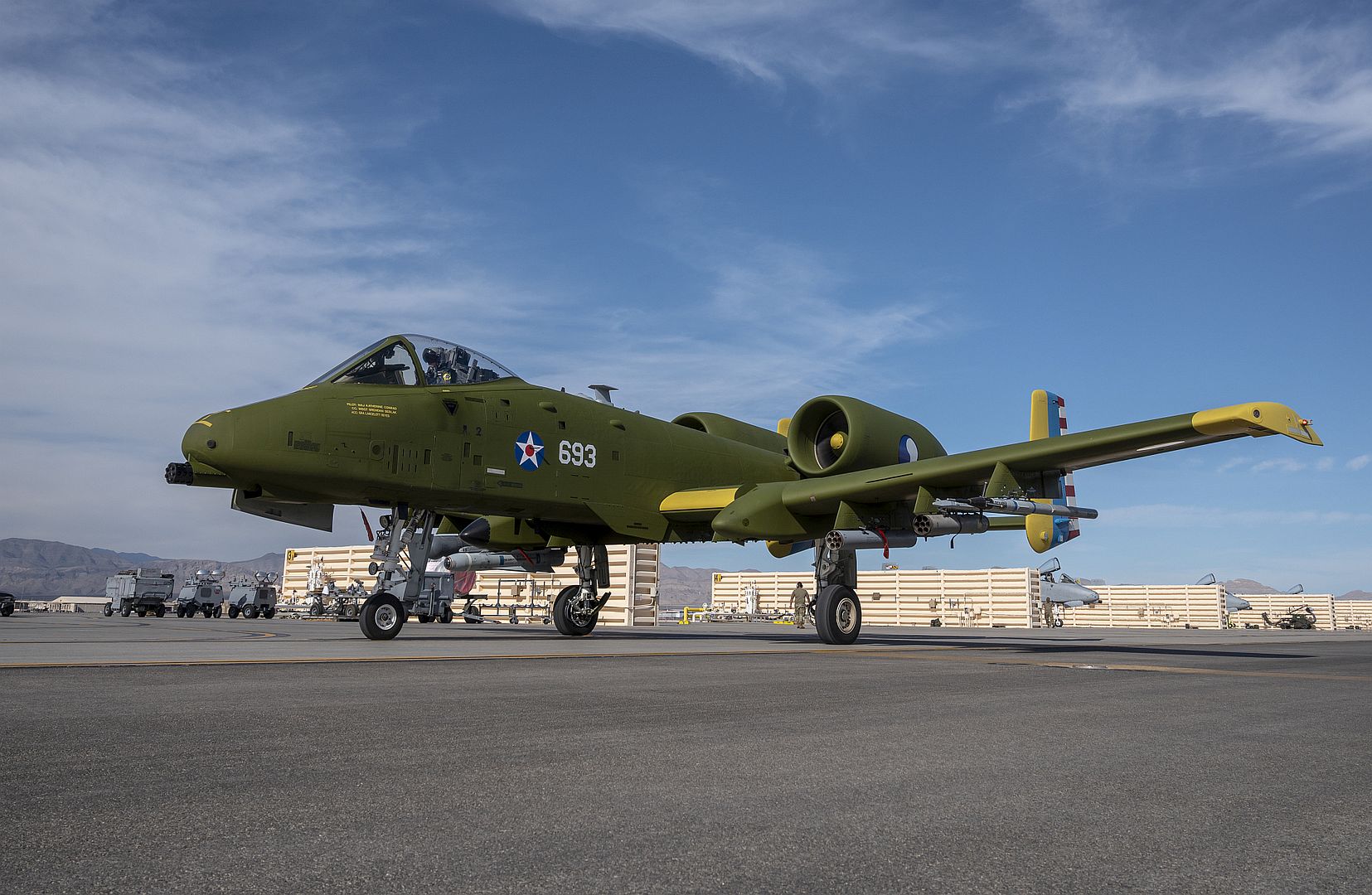
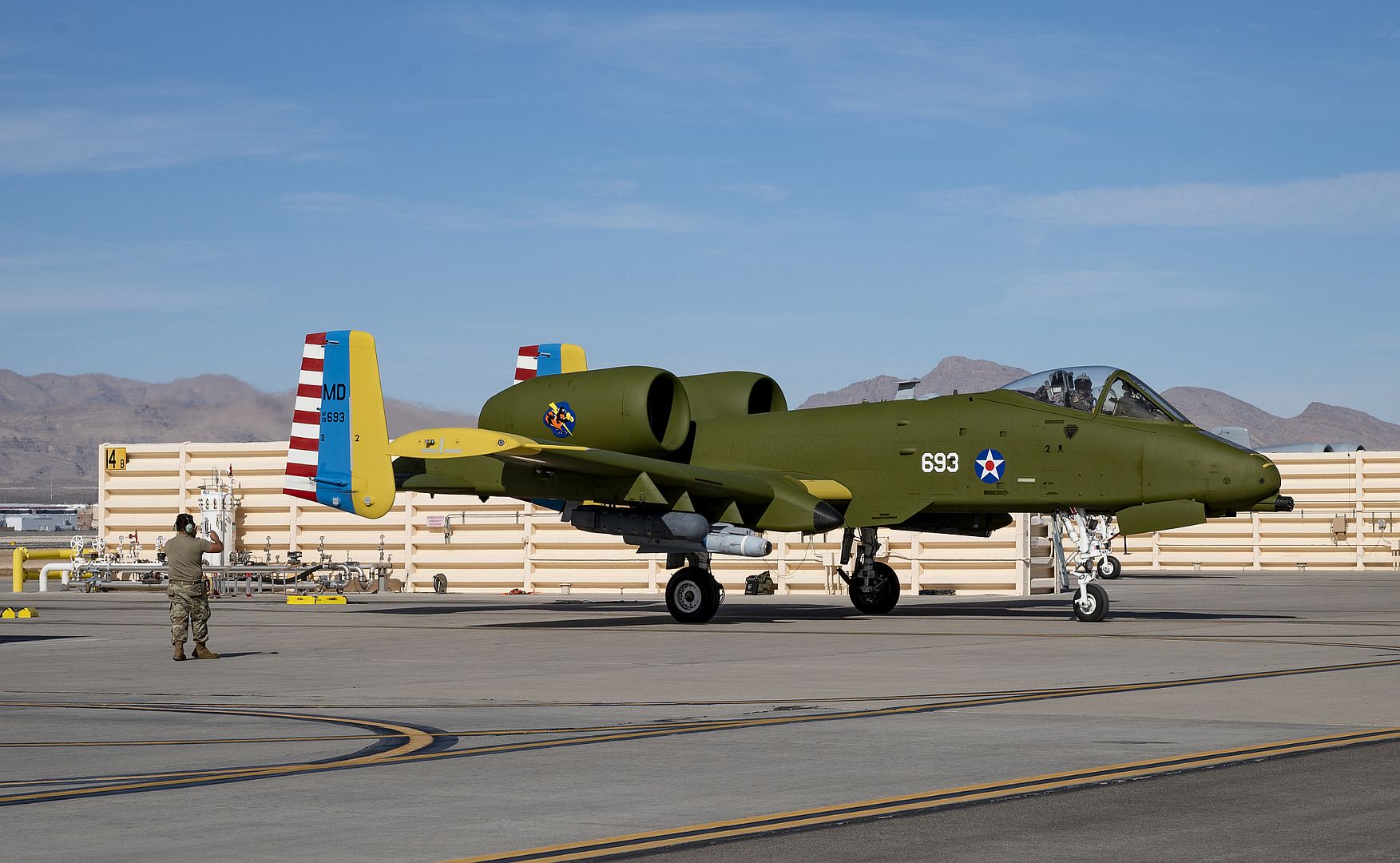
PACIFIC OCEAN (Nov. 7, 2021) An F-35C Lightning II assigned to Marine Fighter Attack Squadron (VMFA) 314 prepares to launch from the flight deck of the aircraft carrier USS Abraham Lincoln (CVN 72) beside an F/A-18E Super Hornet assigned to Strike Fighter Squadron (VFA) 14. Abraham Lincoln is underway conducting routine operations in the U.S. 3rd Fleet. (U.S. Marine Corps photo by 1stLt. Charles Allen)
11.11.2021
Today, on November 11, two strategic missile carriers Tu-160 of the Russian Aerospace Forces performed a patrolling in the airspace of the Republic of Belarus and practiced the support from Su-30SM of the Belarusian Air Force.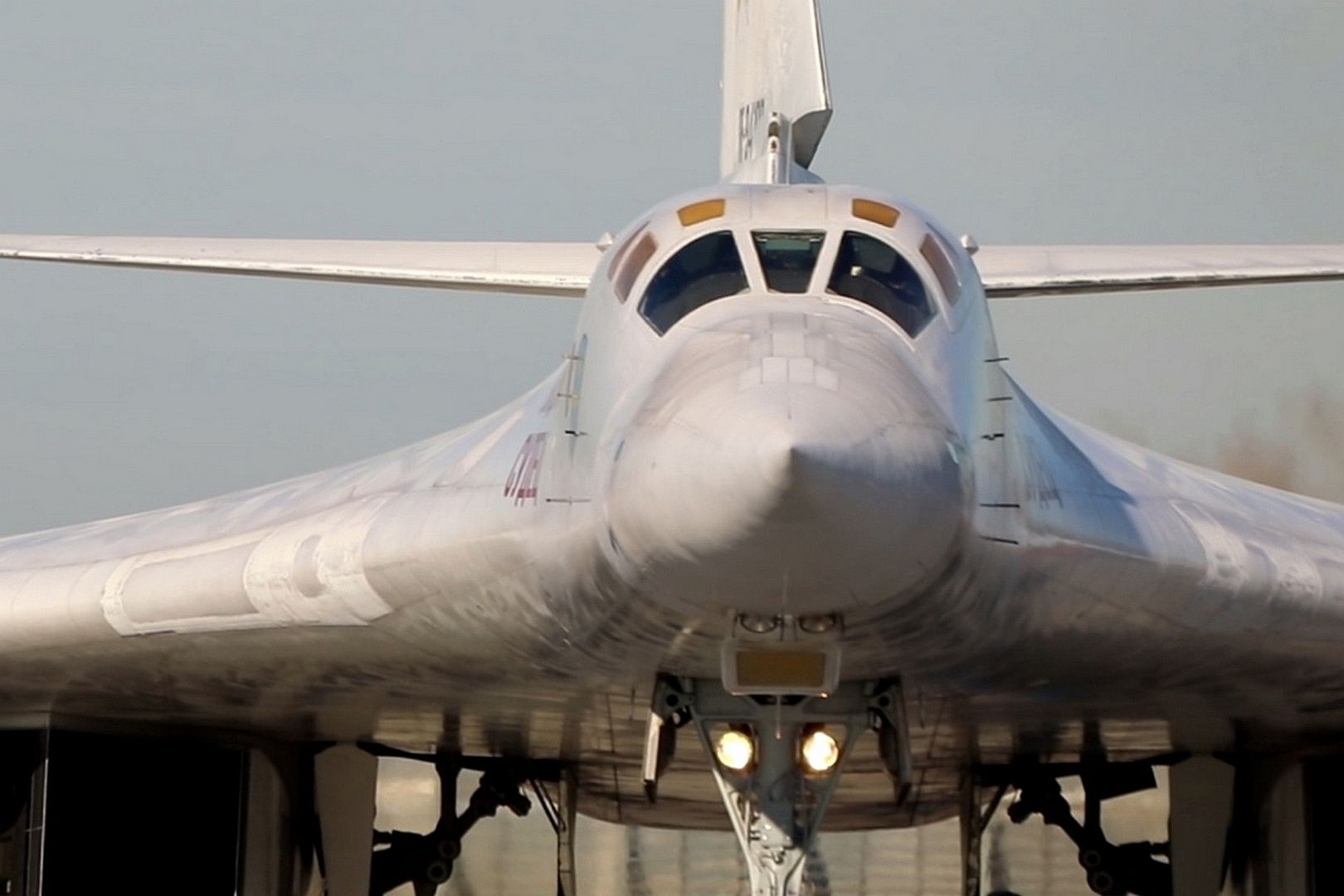
The pilots have successfully accomplished the task and demonstrated an excellent aeronautic skills and mastery. At the same time, there is an increased level of interaction between the Russian and Belarusian crews throughout the entire flight.
The flight had lasted 4 hours and 36 minutes. The strategic missile carriers have passed a distance of more than 3,000 kilometres.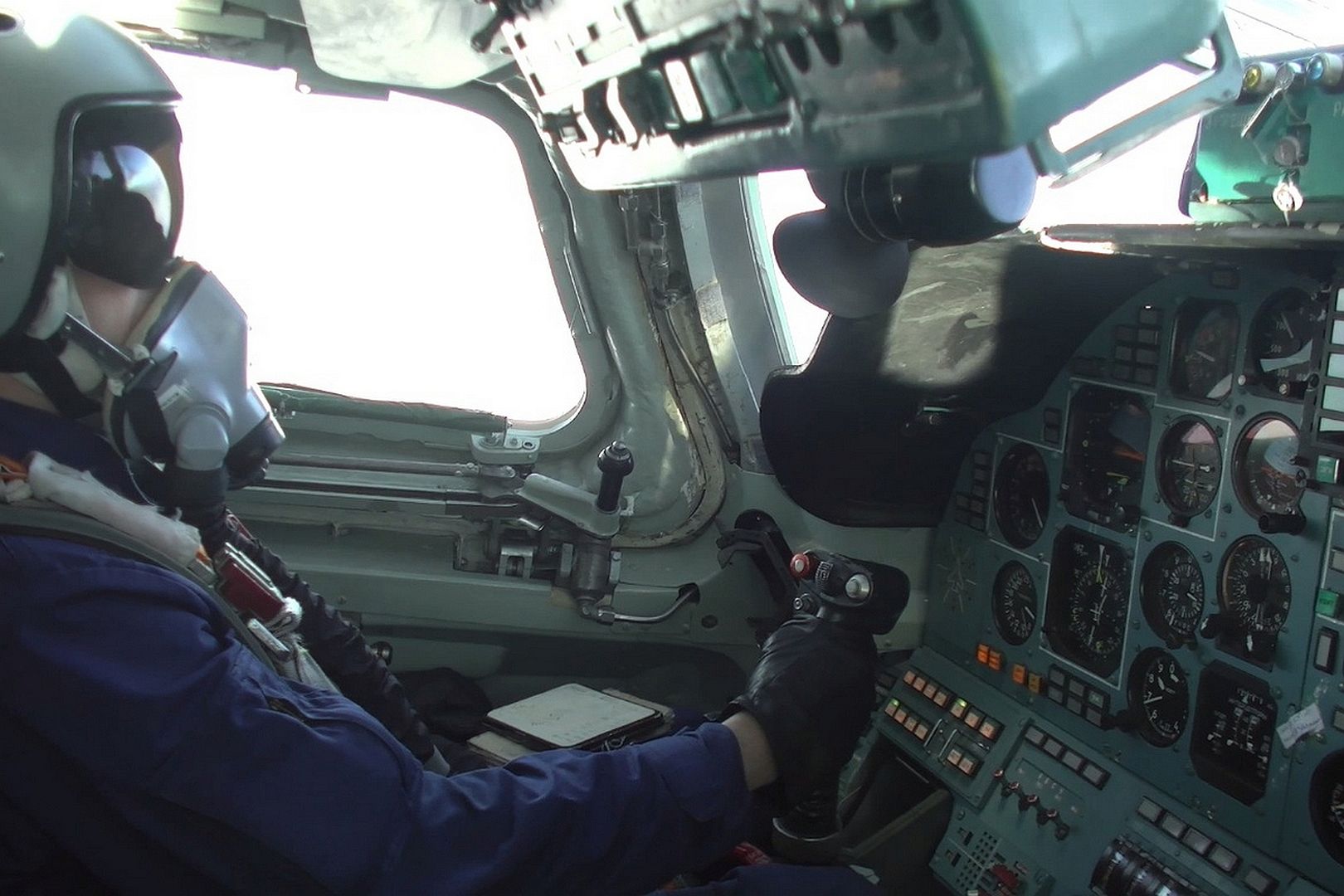
These activities have been performed in order to ensure the military security of the Union State and are not directed against other countries.
All the planes have returned to their air bases.
(Photos courtesy of the Ministry of Defence of the Russian Federation)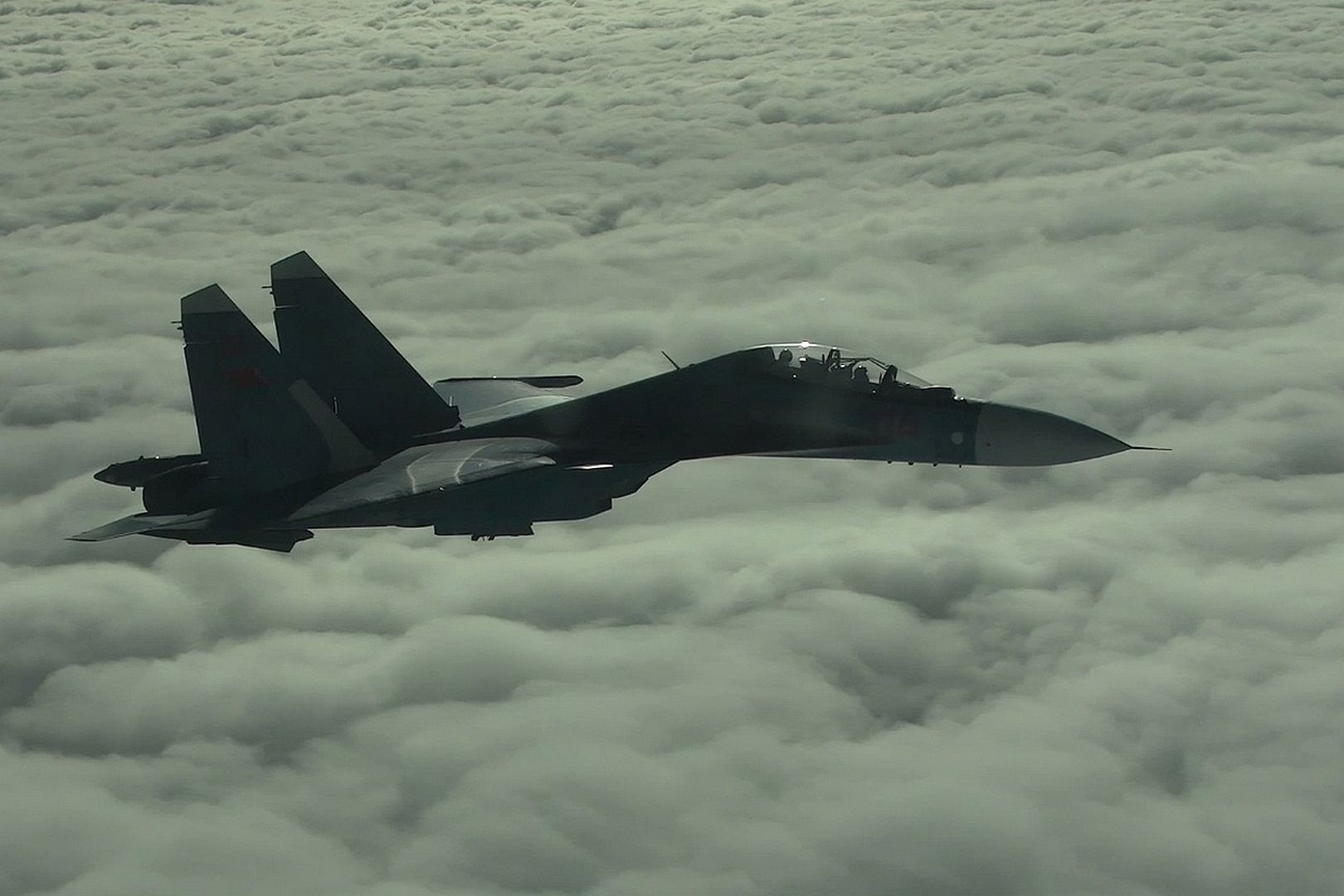
DUBAI, United Arab Emirates, Nov. 14, 2021 /PRNewswire/ -- As global demand for freighters continues to soar, Boeing [NYSE: BA] today announced plans to add three conversion lines for the market-leading 737-800BCF across North America and Europe. The company also signed a firm order with Icelease for eleven of the freighters as the launch customer for one of the new conversion lines.
In 2022, the company will open one conversion line at Boeing's London Gatwick Maintenance, Repair & Overhaul (MRO) facility, its state-of-the-art hangar in the United Kingdom; and two conversion lines in 2023 at KF Aerospace MRO in Kelowna, British Columbia, Canada.
"Building a diverse and global network of conversion facilities is critical to supporting our customers' growth and meeting regional demand," said Jens Steinhagen, director of Boeing Converted Freighters. "KF Aerospace and our Boeing teammates at London Gatwick have the infrastructure, capabilities and expertise required to deliver market-leading Boeing Converted Freighters to our customers."
"We're very excited to be expanding our relationship with Boeing," said Gregg Evjen, chief operating officer, KF Aerospace. "We've been working with the Boeing product line for more than 30 years. With our cargo conversion experience, our highly skilled workforce and all the technical requirements already in place, we're ready to get to work and help serve Boeing's customers."
For Icelease, which recently expanded its cooperation with Corrum Capital through a joint venture called Carolus Cargo Leasing, the order for eleven 737-800BCF will be their first converted freighter order with Boeing. The lessor will be the launch customer for conversions at Boeing's London Gatwick MRO facility.
"We are confident in the quality and proven record of Boeing's 737-800 converted freighter, and pleased to be the launch customer for their new London MRO facility," said Magnus Stephensen, senior partner at Icelease. "We look forward to bringing the freighter in to our fleet to serve our growing global customer base operating domestic and short-haul routes."
Earlier this year, Boeing announced it would create additional 737-800BCF conversion capacity at several sites, including a third conversion line at Guangzhou Aircraft Maintenance Engineering Company Limited (GAMECO), and two conversion lines in 2022 with a new supplier, Cooperativa Autogestionaria de Servicios Aeroindustriales (COOPESA) in Costa Rica. Once the new lines become active, Boeing will have conversion sites in North America, Asia and Europe.
Boeing forecasts 1,720 freighter conversions will be needed over the next 20 years to meet demand. Of those, 1,200 will be standard-body conversions, with nearly 20% of that demand coming from European carriers, and 30% coming from North America and Latin America.
The 737-800BCF is the standard body freighter market leader with more than 200 orders and commitments from 19 customers. The 737-800BCF offers higher reliability, lower fuel consumption, lower operating costs per trip and world-class in-service technical support compared to other standard-body freighters. Learn more about the 737-800BCF and the complete Boeing freighter family here.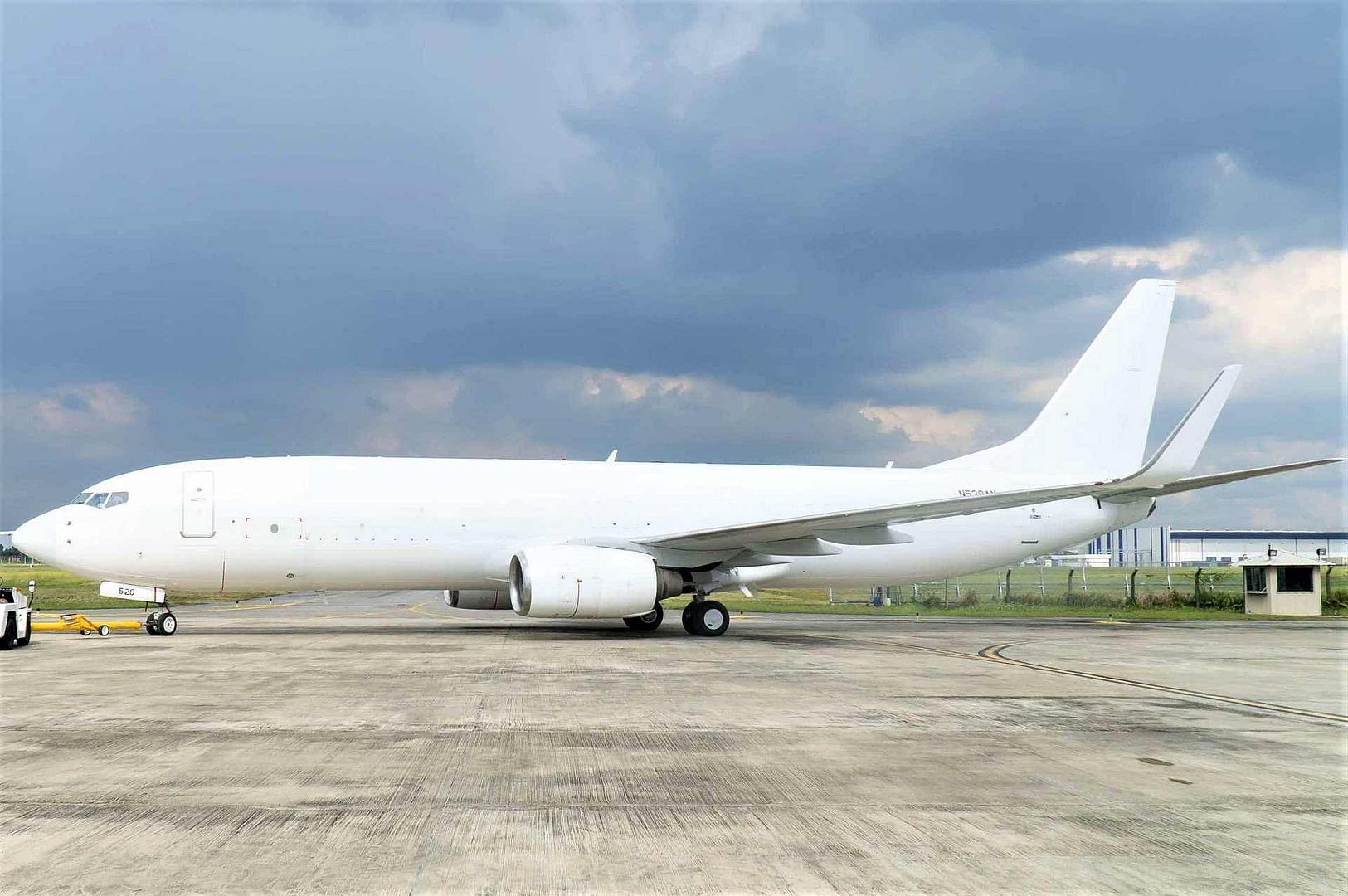
DUBAI, United Arab Emirates, Nov. 15, 2021 /PRNewswire/ -- DHL Express (DHL) and Boeing [NYSE: BA] today announced that the logistics company placed a firm order for nine more 767-300 Boeing Converted Freighters (BCF). Representing their largest single 767-300BCF order to date, the additional freighters will help expand DHL's long-haul intercontinental fleet in response to increased global demand for cargo capacity.
"We are confident in the quality and OEM expertise that comes with Boeing's converted freighters," explains Geoff Kehr, senior vice president, Global Air Fleet Management, DHL Express. "The additional B767 freighters are part of our efforts to modernize DHL's long-haul intercontinental fleet in order to fly eco-friendlier and more cost-efficiently. Our goal is to enhance our well-connected global network whilst reducing carbon emissions and fuel consumption to benefit the environment, partners and customers alike."
DHL has taken delivery of seven of a batch of eight 767-300BCF, that have been leased to DHL partner airlines in the Middle East and Latin America to support its expanding regional networks.
"We are pleased that DHL continues to expand their 767-300BCF fleet to help meet the growing demand for their global logistics and cargo business," said Ihssane Mounir, Boeing's senior vice president of Commercial Sales and Marketing. "The versatility of the 767-300BCF makes it the preferred medium widebody converted freighter for both the general and express cargo markets, ensuring DHL will have the capability, reliability and efficiency they need to capture growth opportunities and maximize their air cargo operations."
The 767-300BCF is the world's most efficient medium widebody converted freighter and can carry up to 51.6 tonnes (113,900 pounds) up to 6,190 kilometers (3,345 nautical miles). 767 Freighters provide the lowest operating costs per trip with excellent payload and range capability.
The 767-300BCF has more than 100 orders and commitments to date. Learn more about the complete Boeing freighter family here.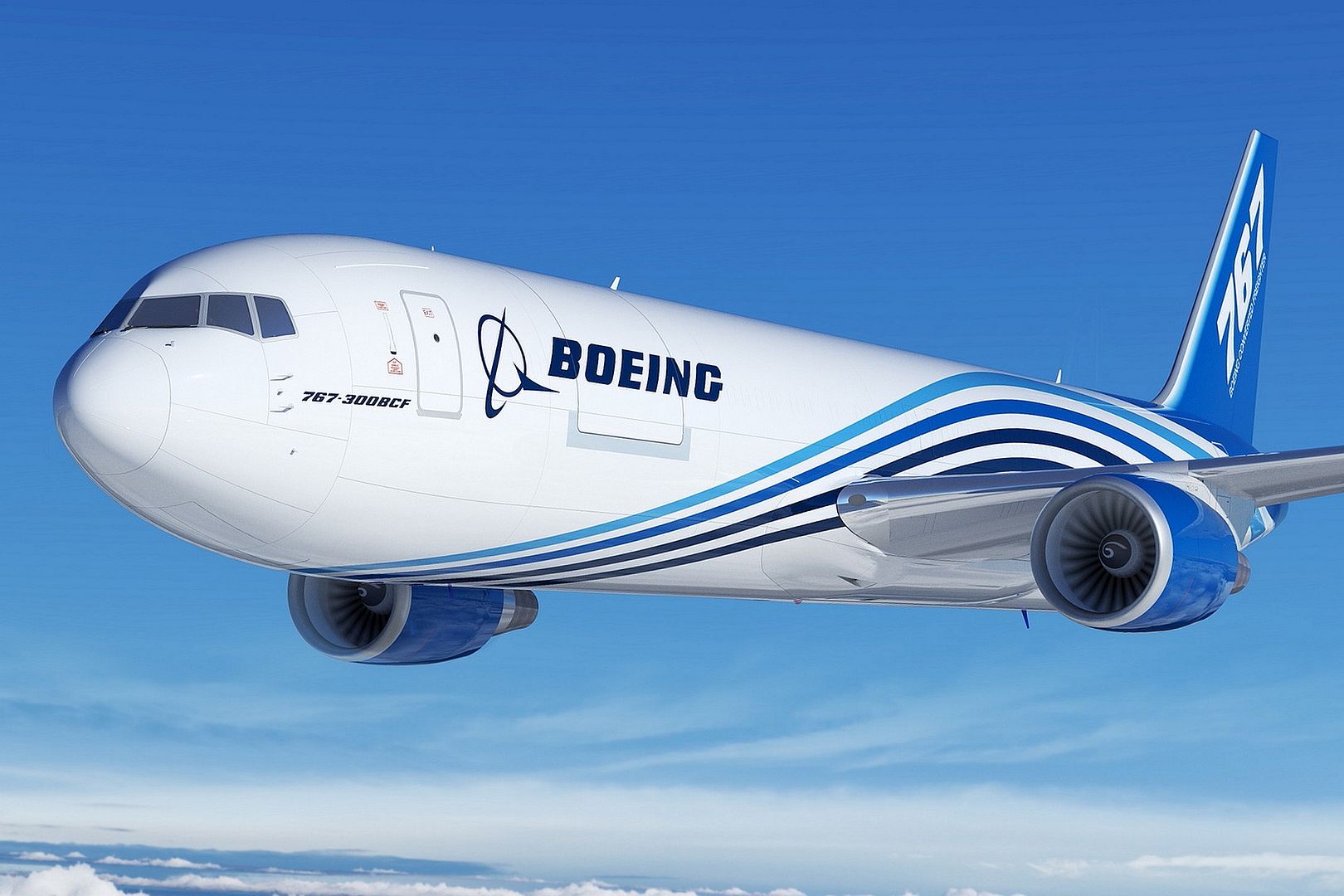
DUBAI, United Arab Emirates, Nov. 15, 2021 /PRNewswire/ -- Boeing [NYSE: BA] and Emirates today announced an order for two 777 Freighters at the 2021 Dubai Airshow, expanding the future capability of one of the world's largest cargo airlines at a time of significant global demand for air freight.
The freighters will be operated by Emirates SkyCargo, which currently operates an all-Boeing fleet of 10 777 Freighters and also carries cargo on Emirates' 134 777 passenger airplanes. Valued at more than $704 million at list prices, the orders were previously attributed to an unidentified customer on Boeing's Orders and Deliveries website.
"Emirates plays a key role in making essential goods available to customers and consumers globally through the capacity available on our widebody fleet, the reach of our global network and the advanced infrastructure at our Dubai hub," said His Highness Sheikh Ahmed bin Saeed Al Maktoum, chairman and chief executive, Emirates Airline and Group. "Today, we are delighted to announce an investment of $1 billion to further expand our freighter capacity. This underscores our commitment to supporting our customers' requirements, and reflects our confidence in our future growth and status as one of the largest airline cargo carriers in the world."
The 777 Freighter – Boeing's best-selling freighter of all time – is the world's largest, longest-range and most capable twin-engine freighter. The airplane reduces fuel use and CO2 emissions by 17% compared to legacy airplanes. With a range of 9,200 kilometers, the 777 Freighter can carry a maximum revenue payload of 102,000 kilograms, allowing airlines to make fewer stops and reduce landing fees on long-haul routes.
"We are honored that Emirates has once again placed its confidence in the 777 Freighter as the backbone of its global network," said Ihssane Mounir, Boeing senior vice president of Commercial Sales and Marketing. "As the largest operator of 777 passenger and freighter models worldwide, Emirates' success is a testament to the 777's market-leading efficiency, improved sustainability and incredible range."
With global supply chains in the spotlight, freight carriers continue to rely on Boeing and its complete family of new and converted freighters. Boeing airplanes currently provide more than 90% of worldwide dedicated freighter capacity. The company's global customer base has ordered more than 300 777 Freighters since 2005, including 38 orders this year, tied to sustained demand for air cargo including expanding e-commerce.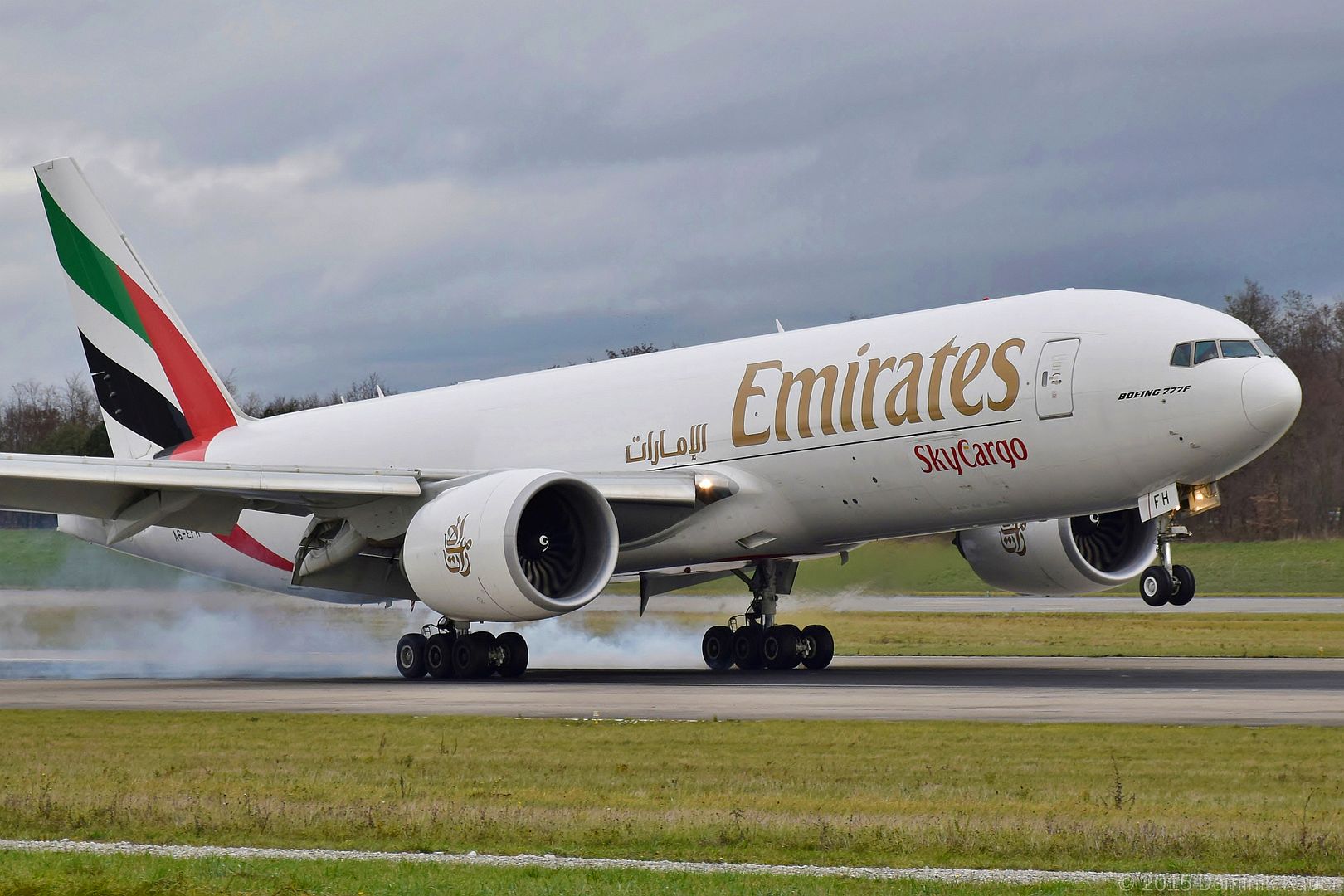
Dubai, 14 November 2021 – The United Arab Emirates Air Force & Air Defence has formally ordered two additional Airbus A330 Multirole Tanker Transport (MRTT) aircraft increasing the country’s MRTT fleet up to five aircraft.
With deliveries starting in 2024, this agreement will also cover the upgrade of the country’s current A330MRTT fleet to the latest enhanced version.
‘Since its entry into service in 2013 with the UAE Air Force, the A330 MRTT has delivered much more than initially expected, meeting our customer’s operational needs. This repeat order, added to the growing MRTT customer base, confirms the suitability of our platform as the world’s tanker of reference’, said Bernhard Brenner, Executive Vice President Marketing and Sales at Airbus Defence and Space.
The A330 MRTT combines the advanced technology of a new generation tanker with the operational experience established over more than 250,000 in-service flight hours. The A330 MRTT is interoperable with receivers worldwide and delivers true multi-role capabilities, proven most recently during the recent MEDEVAC and strategic transport missions during the COVID-19 crisis.
Dubai, UAE, November 15, 2021 – Embraer has announced today, at the Dubai Air Show, a firm order for three new E175, plus three purchase rights for the same model of aircraft, with Overland Airways, from Nigeria. The 88-seat aircraft, with premium class cabin configuration, will be delivered from 2023. The deal is worth at USD 299.4 million, at list price with all purchase rights being exercised.
These aircraft will increase the domestic flights and allow to expand more regional routes. The president and CEO of Overland Airways, Capt. Edward Boyo, said, “we are confident that this is the right moment to invest, as regional aviation is on an optimistic post-pandemic recovery. Our customers will really enjoy all comfort in the E175, and we appreciate our partnership with Embraer.”
Cesar Pereira, Vice-president for Europe, Middle East and Africa, Embraer Commercial Aviation said, “we are proud of this partnership with Overland and to support their regional expansion. We are seeing growing long-term demand for rightsized aircraft to deliver profitable domestic connections in Nigeria.”
During the pandemic, the E175 has been a vital tool for many regional airlines, as they are perfectly suited to rebuilding network, enhancing frequencies and efficiently adding capacity to meet demand that has been gradually recovering.
About Overland Airways
Overland Airways operates from Nigeria across West Africa providing scheduled and charter flight services. The Airline commenced flights in 2002 with the aim of increasing the prosperity of the Nigerian hinterland by providing seamless and reliable air transportation of business and leisure travelers and interconnecting hub cities and remote economies. The Airline is IOSA (IATA Operational Safety Audit) certified, and Member of the International Air Transport Association (IATA)‚ the association of leading global airlines that control over 83% of scheduled global traffic.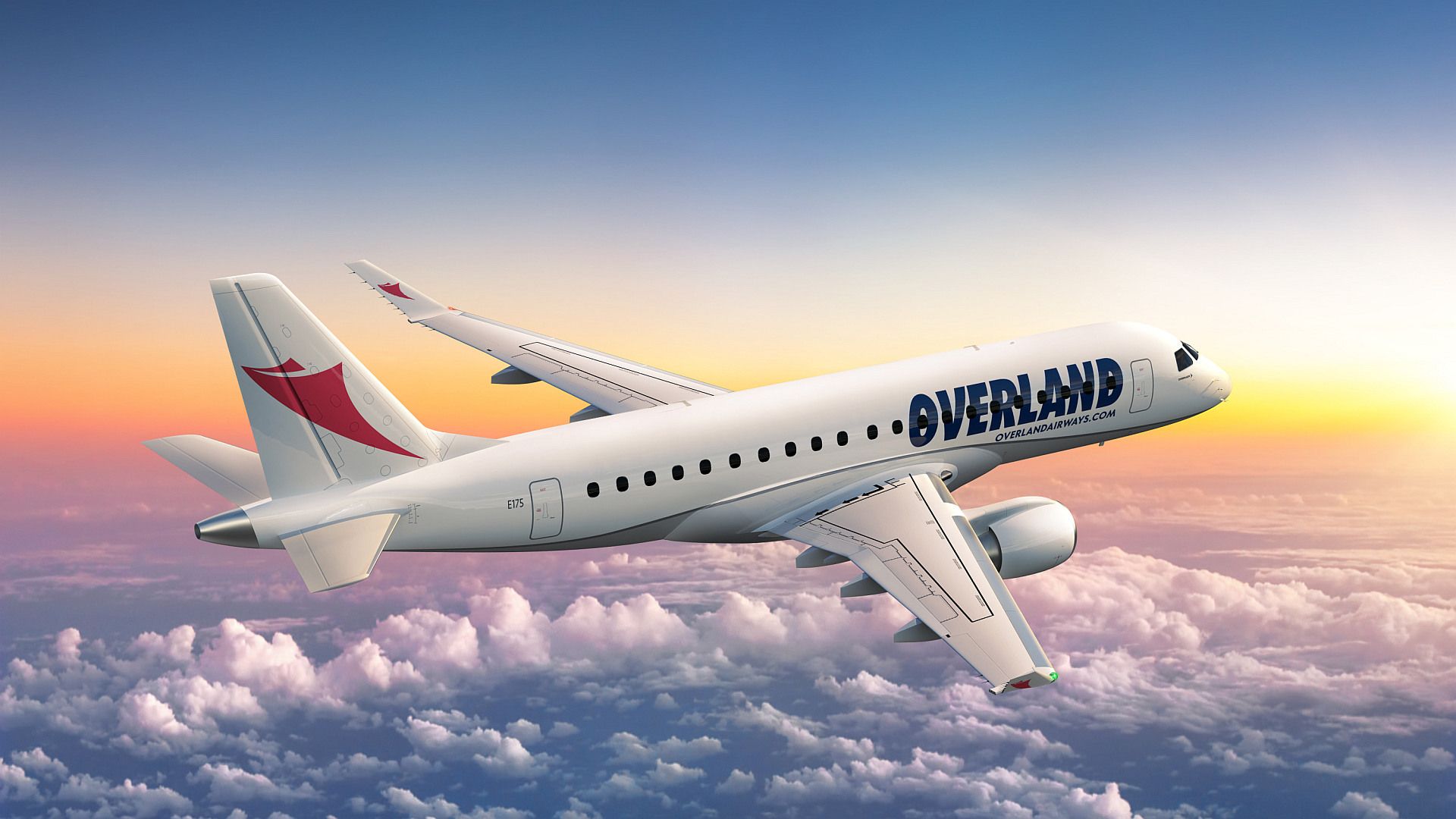
(Saint-Cloud, France, November 15, 2021) – The contract for the acquisition by Egypt of 30 additional Rafales to equip its air force came into force.
Announced on 4 May, this contract completes the first acquisition of 24 Rafales, signed in 2015, and will bring to 54 the number of Rafales operated by the Egyptian Air Force, the second in the world, after the French Air Force, to operate such a fleet of Rafales.
It sets a new milestone in the strategic partnership between Egypt and France, and strengthens the historical ties forged with Dassault Aviation for nearly fifty years. It also demonstrates the satisfaction of the Egyptian authorities with the smooth execution of the first contract. Finally, it confirms the technological and operational excellence of the Rafale and its export success.
“In a demanding geopolitical context, Egypt has chosen the Rafale to ensure its role as a key player in the regional and international arena, in full sovereignty. This is an honour for Dassault Aviation and its partners, who are fully committed to meeting the expectations of the Egyptian authorities,” said Eric Trappier, Chairman and CEO of Dassault Aviation.
WICHITA, Kan. (Nov. 14, 2021) – Textron Aviation Defense LLC today announced a $143 million contract with the Royal Thai Air Force (RTAF) for an Integrated System in support of the 41st Wing light attack operations at Chiang Mai Air Base. The historic contract — for eight Beechcraft AT-6 Wolverine aircraft, ground support equipment, spare parts, training and other equipment — establishes Thailand as the international launch customer for the USAF’s latest light attack aircraft. The work in support of this procurement will take place at the company’s Wichita, Kansas facilities.
The Beechcraft AT-6 Wolverine is designed and manufactured by Textron Aviation Defense LLC, a Textron Inc. (NYSE:TXT) company.
“We are honored the Royal Thai Air Force has competitively selected the Beechcraft AT-6 to conduct a broad array of missions in support of its border security and its anti-smuggling, counter-narcotics and anti-human trafficking operations,” said Thomas Hammoor, president and chief executive officer of Textron Aviation Defense LLC. “The RTAF is a key U.S. security ally and operator of one of the most advanced air forces in Asia Pacific. Its extensive market research and stringent procurement process sought the alignment of best cost, schedule, and performance to replace its existing fleet of aging Aero L-39 Albatros aircraft and advance the capabilities of its fleet with the latest technology.”
The contract for the AT-6 — designated the Beechcraft AT-6TH in Thailand — supports the modernization and interoperability objectives at the forefront of the mutual defense cooperation between the U.S. and Thailand. The contract also contributes to the growth of Thailand’s aerospace industry detailed in the 10-year Royal Thai Air Force Purchase and Development (P&D) Plan, complies with requirements set forth by the Thai National Anti-Corruption Committee (ACC) and empowers RTAF light attack aircrew with a vital technological advantage.
“RTAF pilots and concerned parties found the attributes of the AT-6 procurement program extremely favorable,” stated AM Pongsawat Jantasarn, RTAF’s chairman of the procurement committee. “It will also benefit both Thai and U.S. mutual interests, strengthening the enduring strategic partnership between our nations.”
The contract signing, witnessed by RTAF Air Chief Marshal Chanon Mungthanya, aligns the procurement with the Thai government’s S-Curve 11 strategy — a program that pioneers development of the Thai domestic defense industry, cultivates diversity and supports involvement across foreign and Thai companies.
The Beechcraft AT-6TH becomes the second RTAF procurement contracted in support of S-Curve 11. The first procurement under the new strategy was the Beechcraft T-6TH Texan II, awarded in 2020. The Ministry of Defense supports the S-Curve 11 strategy and the two procurements.
Textron Aviation Defense training of RTAF maintenance professionals is set to begin in Thailand in 2023, while pilot training is set to begin in Wichita in 2024. The Beechcraft AT-6TH will join the Royal Thai fleet in 2024.
-
 Main AdminC-17 Achieved 25K Flight Hour Benchmark
Main AdminC-17 Achieved 25K Flight Hour Benchmark
C-17 Globemaster III, tail number 0534, taxis at Joint Base Charleston, S.C., Nov. 16, 2021. The C-17 Globemaster III is the most flexible cargo aircraft to enter the airlift force. The C-17 is capable of rapid strategic delivery of troops and all types of cargo to main operating bases or directly to forward bases in the deployment area.
As a global workhorse used to support military transport, airdrop, medivac and disaster relief missions, the C-17 fleet achieved this flight hour benchmark faster than nearly any other Air Force fleet.
(U.S. Air Force photos by Airman 1st Class Jade Dubiel)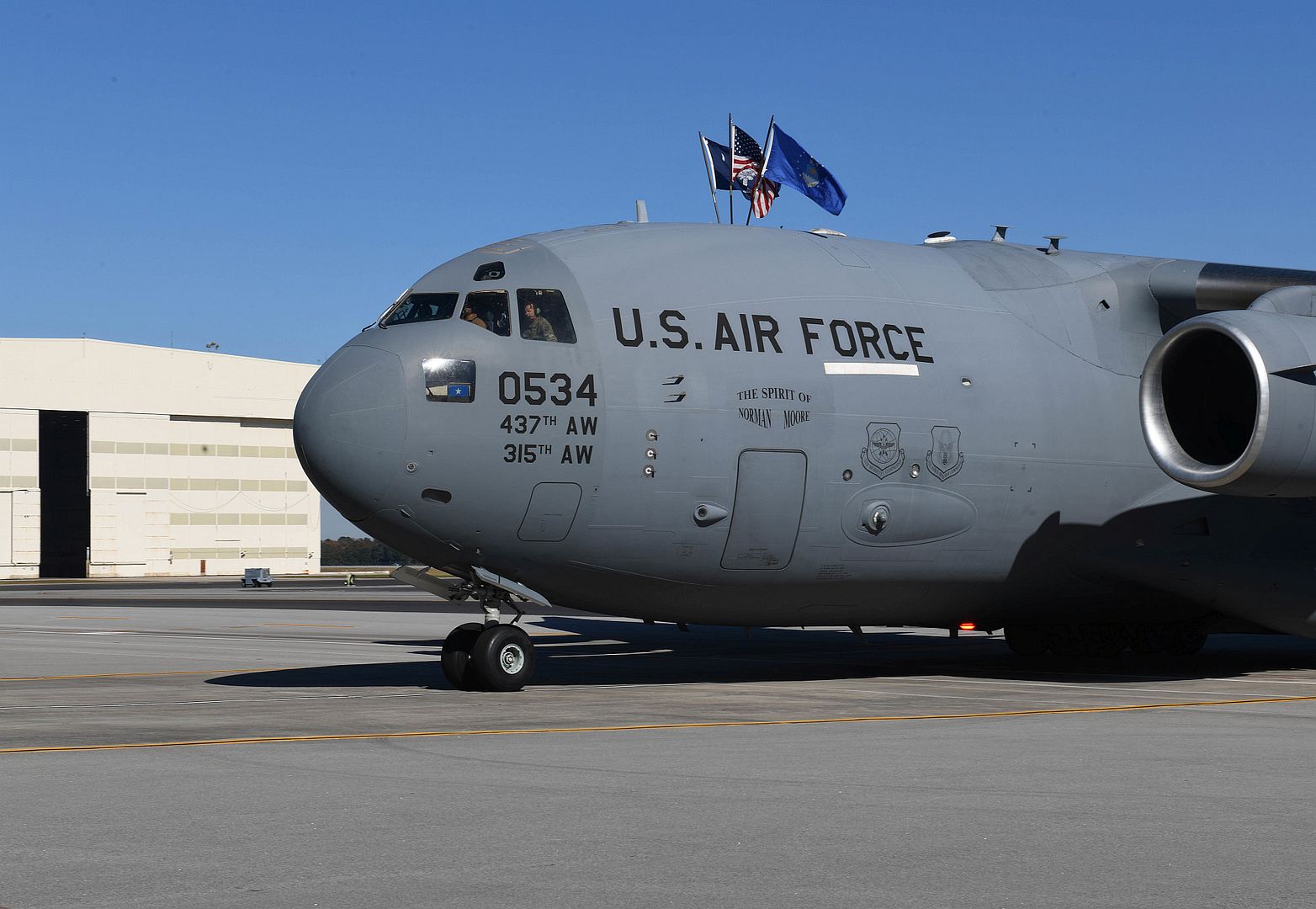

A C-17 Globemaster III assigned to the 62d Airlift Wing taxis down an assault landing zone in Guam, Nov. 9, 2021, during Exercise Rainier War 21B. Rainier War 21B exercised and evaluated the 62nd Airlift Wing’s ability to employ the force and their ability to perform during wartime and contingency taskings in a high-intensity, wartime contested, degraded and operationally limited environment while supporting the contingency operations against a near-peer adversary in the U.S. Indo-Pacific Command area of responsibility. (U.S. Air Force photo by Staff Sgt. Rachel Williams)
An F-15C Eagle flies next to a KC-135 Stratotanker over the Pacific, Nov 6, 2021. F-15s routinely conducts freedom of navigation, joint and multilateral capabilities building taskings in support of Indo-Pacific Command operations. (U.S. Air Force photo by Tech. Sgt. Soo C. Kim)
A U.S. Air Force F-16 Fighting Falcon assigned to the 56th Fighter Wing, Luke Air Force Base, Arizona, flies over Phoenix during the NASCAR Cup Series Championship Nov. 7, 2021. F-16 pilots assigned to the 56th and 944th FW, which train U.S. Air Force F-16 pilots, performed a 4-ship formation flyover at the conclusion of the U.S. National Anthem at the Phoenix Raceway to kick-off the championship race. Luke AFB continually bolsters partnerships with various organizations around Arizona, gaining support from the surrounding community.
(Photos by Airman 1st Class Dominic Tyler)

JOINT BASE MCGUIRE-DIX-LAKEHURST, N.J. - The KC-46A Pegasus touches down on Joint Base McGuire-Dix-Lakehurst, N.J., Nov. 9, 2021. The arrival of the KC-46 on Joint Base MDL reinforces the role of the installation in enabling global reach. The 305th and 514th Air Mobility Wings will operate and maintain the aircraft with installation support from the 87th Air Base Wing.
(Photo By: Staff Sgt. Sean Mathew Evans)
Fort Worth, TX (November 16, 2021) - Bell Textron Inc., a Textron Inc. (NYSE: TXT) company, announced today the Bell 525 Relentless completed its first flight using Sustainable Aviation Fuel (SAF) in summer 2021. Bell first incorporated SAF in its training and demonstration fleet in March 2021.
“The Bell 525 continues to demonstrate unprecedented performance as it progresses through flight testing,” said Doug May, vice president of Flight, Bell. “Showcasing the aircraft’s usage of SAF further reinforces its position as a true 21st century aircraft, capable of bringing more sustainable practices to the industry and future customers.”
Bell sources this fuel from Avfuel Corp. and is the fuel provider’s first rotorcraft customer to use and complete flights with SAF. This brand of biofuel, Neste MY SAF, is made from renewable, sustainably sourced waste and residue materials. Once blended, Avfuel anticipates a 22-metric ton reduction in lifecycle carbon emissions per truck load.
Bell’s SAF initiative supports Textron’s Achieve 2025 Sustainable Footprint goal for 20% reduction in greenhouse gas emissions across the enterprise, among other sustainability initiatives.
“At Bell, our goal is to set the standard for clean aviation and pave the way for a greener future by minimizing our operational impact," said Michael Thacker, executive vice president, Innovation and Commercial Business, Bell. "This is a major milestone in our sustainability journey, and we look forward to implementing more carbon emission reduction practices in the future."
The Bell 525 team is currently engaged with the FAA on Type Inspection Authorization (TIA) flight testing and is submitting certification artifacts to the FAA in parallel. The aircraft is designed to support long-range missions, including oil and gas, and offers a significant reduction in fuel consumption compared to other large twin-engine aircraft commonly used for offshore operations. Bell will continue to use SAF for Bell 525 test flights when SAF availability and flight test schedules allow for refueling opportunities.
-
 Main AdminPACIFIC OCEAN (Nov. 15, 2021) A F-35C Lightning IIs, assigned to Marine Wing Fighter Attack Squadron (VMFA) 314, launche from the flight deck of the aircraft carrier USS Abraham Lincoln (CVN 72). Abraham Lincoln is underway conducting routine operations in the U.S. 3rd Fleet area of responsibility. (U.S. Marine Corps photos by 1stLt. Charles Allen/Released)
Main AdminPACIFIC OCEAN (Nov. 15, 2021) A F-35C Lightning IIs, assigned to Marine Wing Fighter Attack Squadron (VMFA) 314, launche from the flight deck of the aircraft carrier USS Abraham Lincoln (CVN 72). Abraham Lincoln is underway conducting routine operations in the U.S. 3rd Fleet area of responsibility. (U.S. Marine Corps photos by 1stLt. Charles Allen/Released)


PACIFIC OCEAN (Nov. 15, 2021) F-35C Lightning II, assigned to Marine Wing Fighter Attack Squadron (VMFA) 314, land on the flight deck of the aircraft carrier USS Abraham Lincoln (CVN 72). Abraham Lincoln is underway conducting routine operations in the U.S. 3rd Fleet area of responsibility. (U.S. Marine Corps photos by 1stLt. Charles Allen/Released)

PHILIPPINE SEA (Nov. 16, 2021) An F/A-18F Super Hornet, assigned to the “Bounty Hunters” of Strike Fighter Squadron (VFA) 2, prepares to launch off the flight deck of Nimitz-class aircraft carrier USS Carl Vinson (CVN 70), Nov. 16, 2021. Carl Vinson Carrier Strike Group is on a scheduled deployment in the U.S. 7th Fleet area of operations to enhance interoperability through alliances and partnerships while serving as a ready-response force in support of a free and open Indo-Pacific region. (U.S. Navy photo by Mass Communication Specialist 1st Class Tyler R. Fraser)
PHILIPPINE SEA (Nov. 16, 2021) An F/A-18E Super Hornet, assigned to the “Stingers” of Strike Fighter Squadron (VFA) 113, recovers on the flight deck of Nimitz-class aircraft carrier USS Carl Vinson (CVN 70), Nov. 16, 2021. Carl Vinson Carrier Strike Group is on a scheduled deployment in the U.S. 7th Fleet area of operations to enhance interoperability through alliances and partnerships while serving as a ready-response force in support of a free and open Indo-Pacific region. (U.S. Navy photo by Mass Communication Specialist 1st Class Tyler R. Fraser)
PHILIPPINE SEA (Nov. 16, 2021) An F/A-18E Super Hornet, assigned to the “Golden Dragons” of Strike Fighter Squadron (VFA) 192, recovers on the flight deck of Nimitz-class aircraft carrier USS Carl Vinson (CVN 70), Nov. 16, 2021. Carl Vinson Carrier Strike Group is on a scheduled deployment in the U.S. 7th Fleet area of operations to enhance interoperability through alliances and partnerships while serving as a ready-response force in support of a free and open Indo-Pacific region. (U.S. Navy photo by Mass Communication Specialist 1st Class Tyler R. Fraser)
PHILIPPINE SEA (Nov. 16, 2021) An F-35C Lightning II, assigned to the “Argonauts” of Strike Fighter Squadron (VFA) 147, prepares to launch off the flight deck of Nimitz-class aircraft carrier USS Carl Vinson (CVN 70), Nov. 16, 2021. Carl Vinson Carrier Strike Group is on a scheduled deployment in the U.S. 7th Fleet area of operations to enhance interoperability through alliances and partnerships while serving as a ready-response force in support of a free and open Indo-Pacific region. (U.S. Navy photo by Mass Communication Specialist 1st Class Tyler R. Fraser).jpg?width=1920&height=1080&fit=bounds)
PHILIPPINE SEA (Nov. 17, 2021) An F/A-18F Super Hornet, assigned to the “Bounty Hunters” of Strike Fighter Squadron (VFA) 2, taxis on the flight deck of Nimitz-class aircraft carrier USS Carl Vinson (CVN 70), Nov. 17, 2021. Carl Vinson Carrier Strike Group is on a scheduled deployment in the U.S. 7th Fleet area of operations to enhance interoperability through alliances and partnerships while serving as a ready-response force in support of a free and open Indo-Pacific region. (U.S. Navy photo by Mass Communication Specialist 1st Class Tyler R. Fraser).jpg?width=1920&height=1080&fit=bounds)
PHILIPPINE SEA (Nov. 17, 2021) An F/A-18E Super Hornet, assigned to the “Stingers” of Strike Fighter Squadron (VFA) 113, taxis on the flight deck of Nimitz-class aircraft carrier USS Carl Vinson (CVN 70), Nov. 17, 2021. Carl Vinson Carrier Strike Group is on a scheduled deployment in the U.S. 7th Fleet area of operations to enhance interoperability through alliances and partnerships while serving as a ready-response force in support of a free and open Indo-Pacific region. (U.S. Navy photo by Mass Communication Specialist 1st Class Tyler R. Fraser).jpg?width=1920&height=1080&fit=bounds)
PHILIPPINE SEA (Nov. 17, 2021) An F/A-18F Super Hornet, assigned to the “Bounty Hunters” of Strike Fighter Squadron (VFA) 2, prepares to launch off the flight deck of Nimitz-class aircraft carrier USS Carl Vinson (CVN 70), Nov. 17, 2021. Carl Vinson Carrier Strike Group is on a scheduled deployment in the U.S. 7th Fleet area of operations to enhance interoperability through alliances and partnerships while serving as a ready-response force in support of a free and open Indo-Pacific region. (U.S. Navy photo by Mass Communication Specialist 1st Class Tyler R. Fraser)
Cologne, 17 November 2021 – Airbus Helicopters has delivered the first five-bladed H145 to be used in the offshore wind segment to its long-term customer HTM Helicopters. The aircraft will be operated from one of HTM’s bases at Norden-Norddeich, Emden, Borkum and Helgoland. For its missions, which include passenger transport to and from wind farms and hoisting technicians to the wind-turbines, the helicopter is equipped with a powerful hoist, floatation equipment, and a cargo hook.
“We already operate one four-bladed H145 in the offshore wind segment which has proven to be the perfect fit for our operations in often challenging environments,” says Bernd Brucherseifer, Pilot and Managing Director at HTM Helicopters. “The increased useful load, the smoother ride on board and the excellent OEI performance of the five-bladed version will help us to further enhance our mission capabilities.”
“We’d like to thank HTM Helicopters for its continued trust in our helicopters and especially in the H145,” says Axel Humpert, Head of the H145 Programme. “We’re proud that our helicopters are used to maintain offshore wind parks, which play an important role in the expansion of renewable energy.”
The European Union has set its target to increase the offshore wind energy capacity to more than 60 Giga Watt by 2030 (2020: 12 GW). With its outstanding performance for the transport and hoisting of wind farm technicians, the H145 can address more than 95% of the world's current and future offshore wind farms projects.
The new version of Airbus’ best-selling H145 light twin-engine helicopter was unveiled at Heli-Expo 2019 in Atlanta in March. This latest upgrade adds a new, innovative five-bladed rotor to the multi-mission H145, increasing the useful load of the helicopter by 150 kg. The simplicity of the new bearingless main rotor design will also ease maintenance operations, further improving the benchmark serviceability and reliability of the H145, while improving ride comfort for both passengers and crew.
There are more than 1,515 H145 family helicopters in service around the world, logging a total of more than six million flight hours. Powered by two Safran Arriel 2E engines, the H145 is equipped with full authority digital engine control (FADEC) and the Helionix digital avionics suite. It includes a high performance 4-axis autopilot, increasing safety and reducing pilot workload. Its particularly low acoustic footprint makes the H145 the quietest helicopter in its class.
HTM Helicopters is one of the largest helicopter companies in Germany and employs around 150 people. Since April 2020, it has been fully owned by HERISTO Aktiengesellschaft. The core business of the HTM Group is the provisioning of helicopters for civil and military customers, offshore operations, ambulance & passenger flights, flight training and work flights in the mountains. HTM Group features an EASA Part-145 and Part-21 G/J approved organization.
-
 Main AdminU.S. Marine Corps F/A-18 Hornet aircraft with Marine Fighter Attack Squadron 112 fly during an aerial refueling exercise in Japan, Nov. 16, 2021. During the exercise, VMFA-112 received fuel from a KC-130J Super Hercules aircraft with Marine Aerial Refueler Transport Squadron 152, extending Hornet’s maximum range capabilities. Marines with VMFA-112, based out of Naval Air Station Joint Reserve Base Fort Worth, Texas are on a rotational unit deployment program at Marine Corps Air Station Iwakuni to maintain regional stability and a free and open Indo-Pacific. (U.S. Marine Corps photos by Sgt. Booker T. Thomas III)
Main AdminU.S. Marine Corps F/A-18 Hornet aircraft with Marine Fighter Attack Squadron 112 fly during an aerial refueling exercise in Japan, Nov. 16, 2021. During the exercise, VMFA-112 received fuel from a KC-130J Super Hercules aircraft with Marine Aerial Refueler Transport Squadron 152, extending Hornet’s maximum range capabilities. Marines with VMFA-112, based out of Naval Air Station Joint Reserve Base Fort Worth, Texas are on a rotational unit deployment program at Marine Corps Air Station Iwakuni to maintain regional stability and a free and open Indo-Pacific. (U.S. Marine Corps photos by Sgt. Booker T. Thomas III)


U.S. Air Force Airmen assigned to the 41st Rescue Squadron aboard an HH-60W Jolly Green II receive fuel from an HC-130J Combat King II assigned to the 71st Rescue Squadron while in transit to a combat search and rescue training mission in the Gulf of Mexico during Mosaic Tiger 22-1, Nov. 16, 2021. The aircrew enabled pararescuemen from the 38th Rescue Squadron to recover a simulated survivor from the water. Mosaic Tiger 22-1 is a command and control exercise designed to test and hone the lead-wing concept, generating airpower to austere and dispersed locations while combating degraded communications. (U.S. Air Force photos by Staff Sgt. Devin Boyer)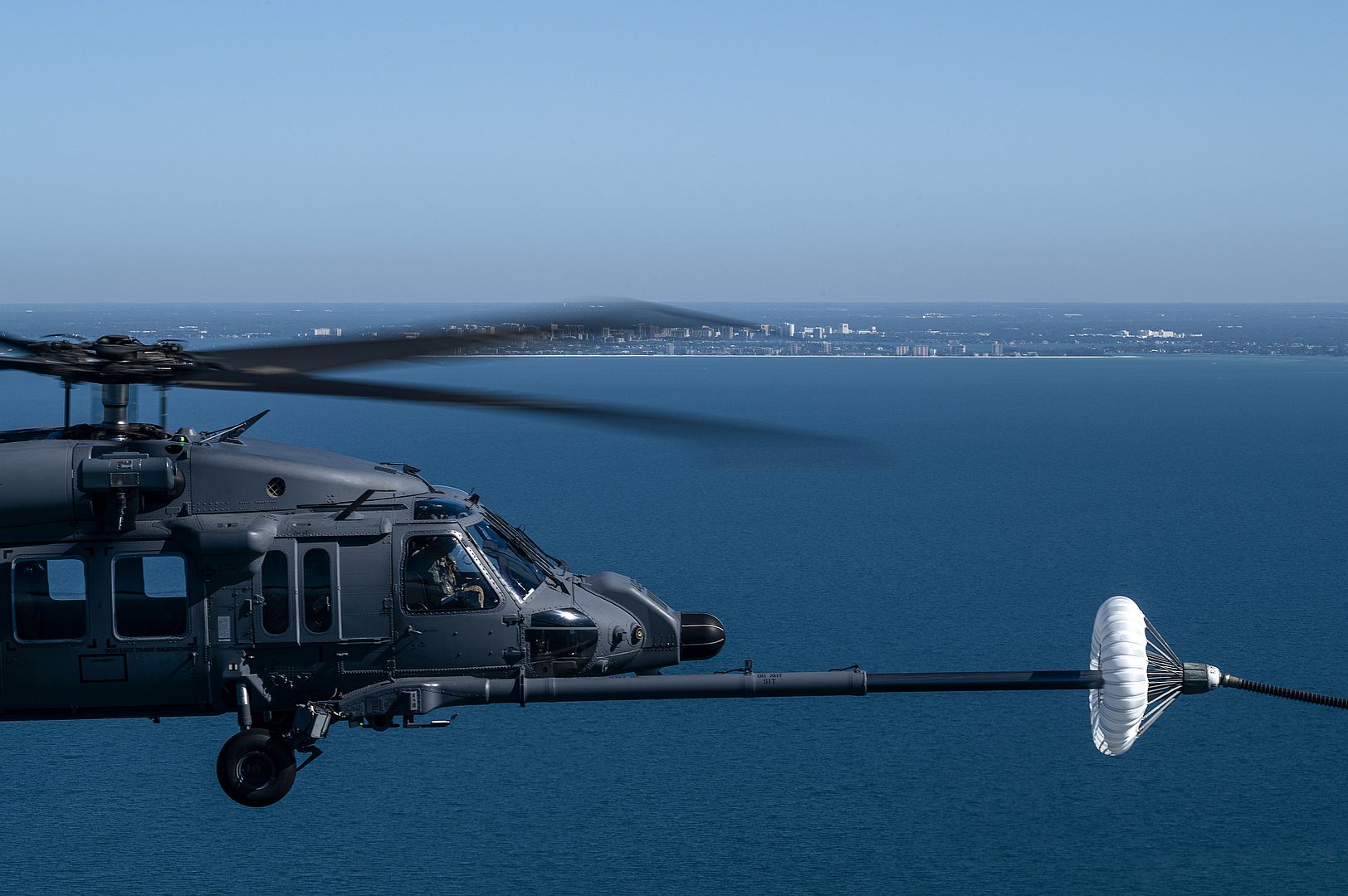

OAK HARBOR, Wash. (Nov. 17, 2021) A P-8A Poseidon maritime patrol aircrafts, assigned to the “Grey Knights” of Patrol Squadron (VP) 46, sit on the flightline, Nov. 17, 2021. VP-46 has recently returned from a maiden P-8A deployment to the U.S. Fifth and Sixth Fleet area of responsibility (AOR) and is currently supporting Home Land Defense operations out of Kaneohe Bay, Hawaii as part of Commander, Task Force 32, while also completing an Inter-Deployment Readiness Cycle in preparation for their return to the U.S. Sixth Fleet (AOR). (U.S. Navy Photo by Mass Communication Specialist 2nd Class Austin Ingram)
18.11.2021.
Scheduled flights on Tu-95ms strategic missile carriers and Tu-22m3 supersonic bombers took place in the aviation regiments of the long-range aviation unit based in the Amur and Irkutsk regions.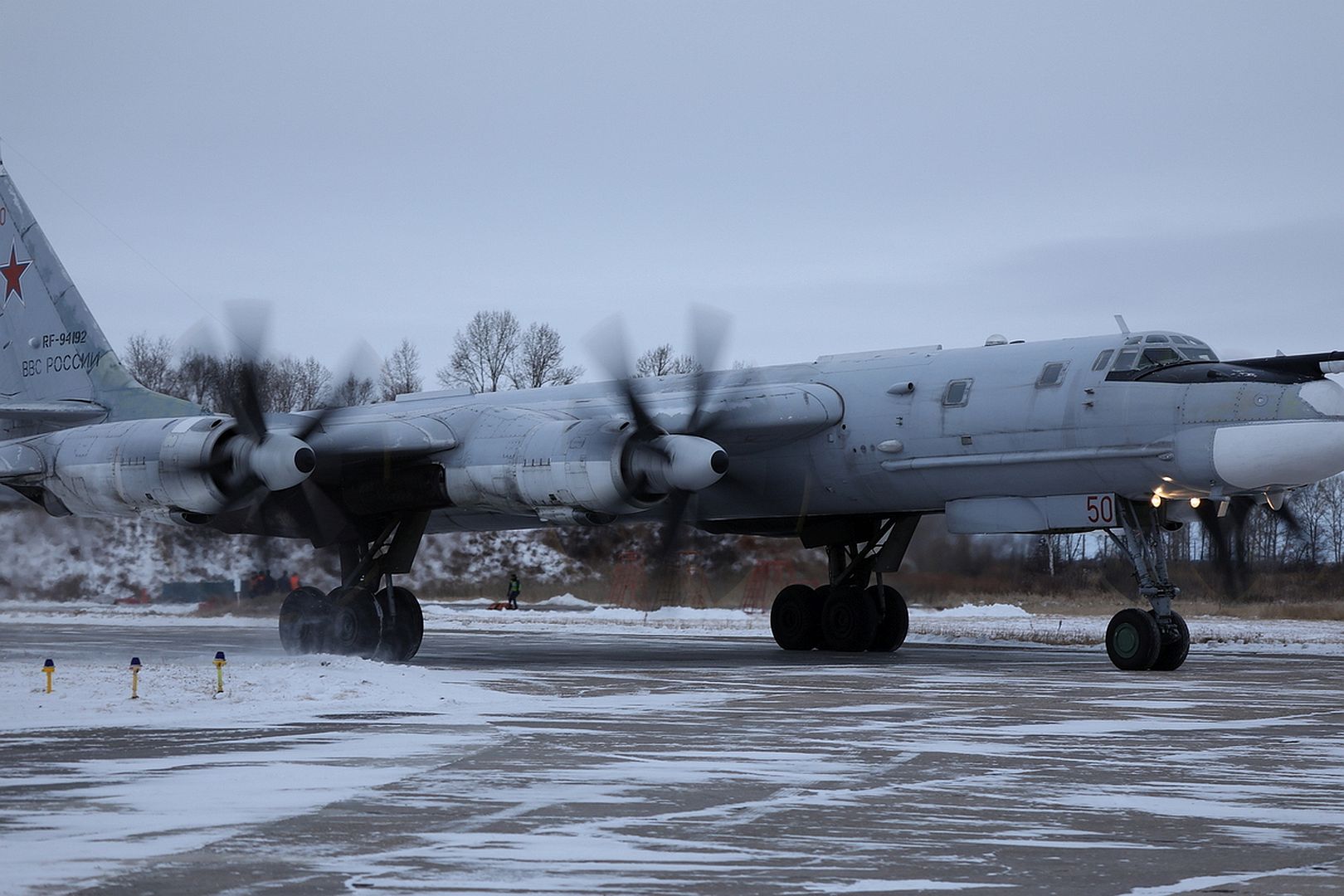
To fulfill the plan of the training shift, crews were involved in piloting and navigation, which included both experienced pilots and navigators, as well as young flight personnel.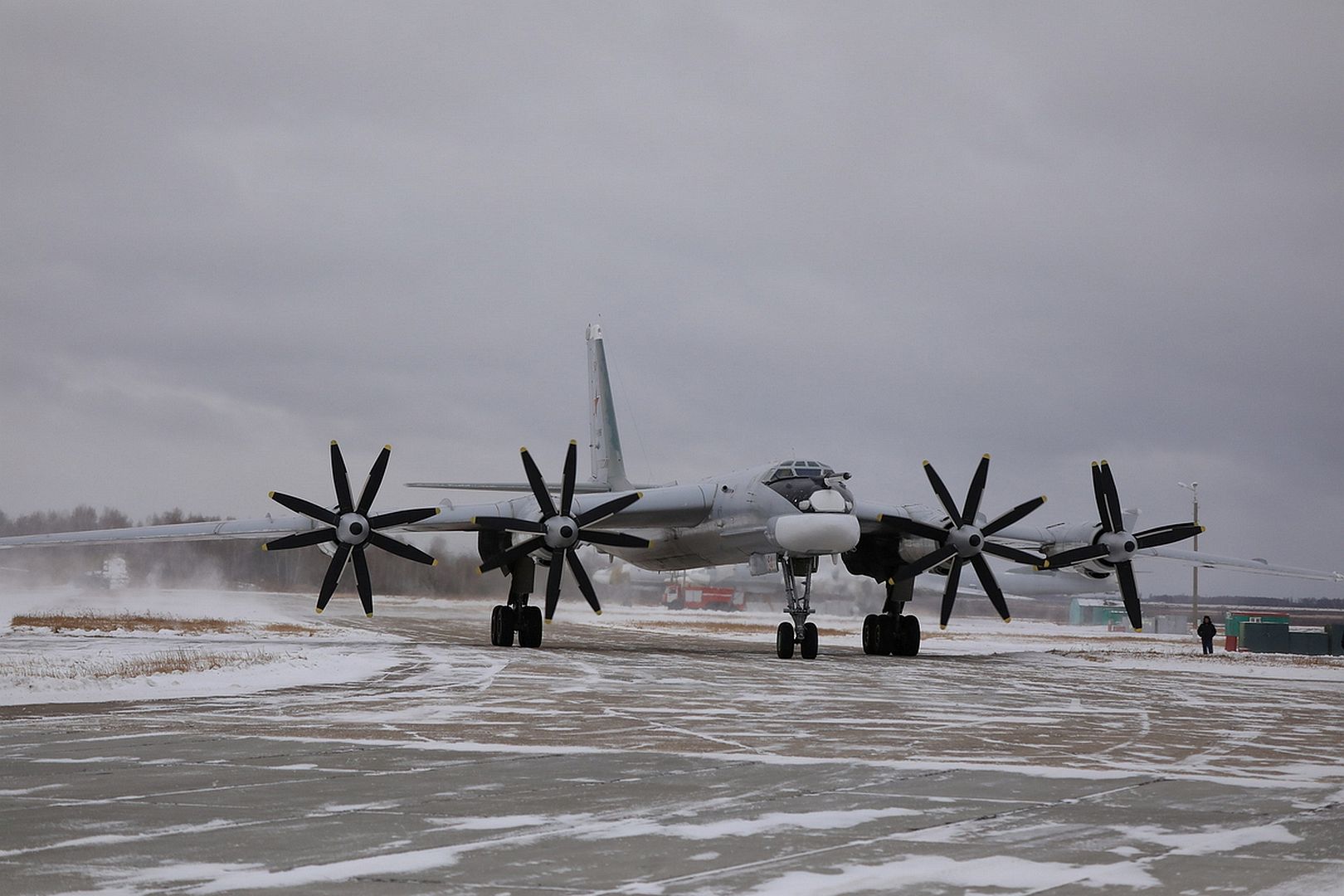
During the performance of flight tasks, the elements of checking the piloting technique of crew members, as well as the actions of the flight crew to maintain training during flights during daylight and dark hours were worked out.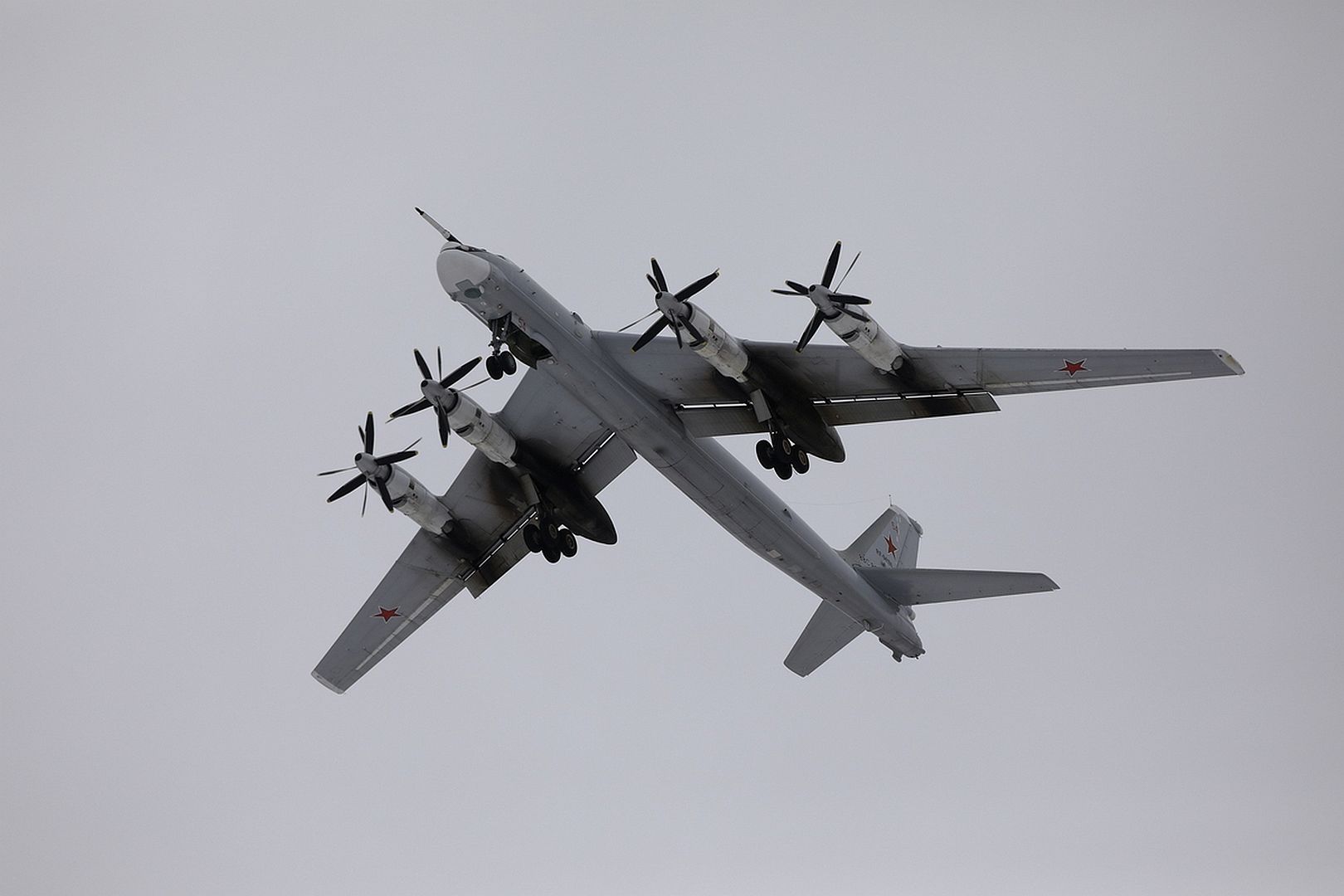
Special attention is paid to group flights in formation at night.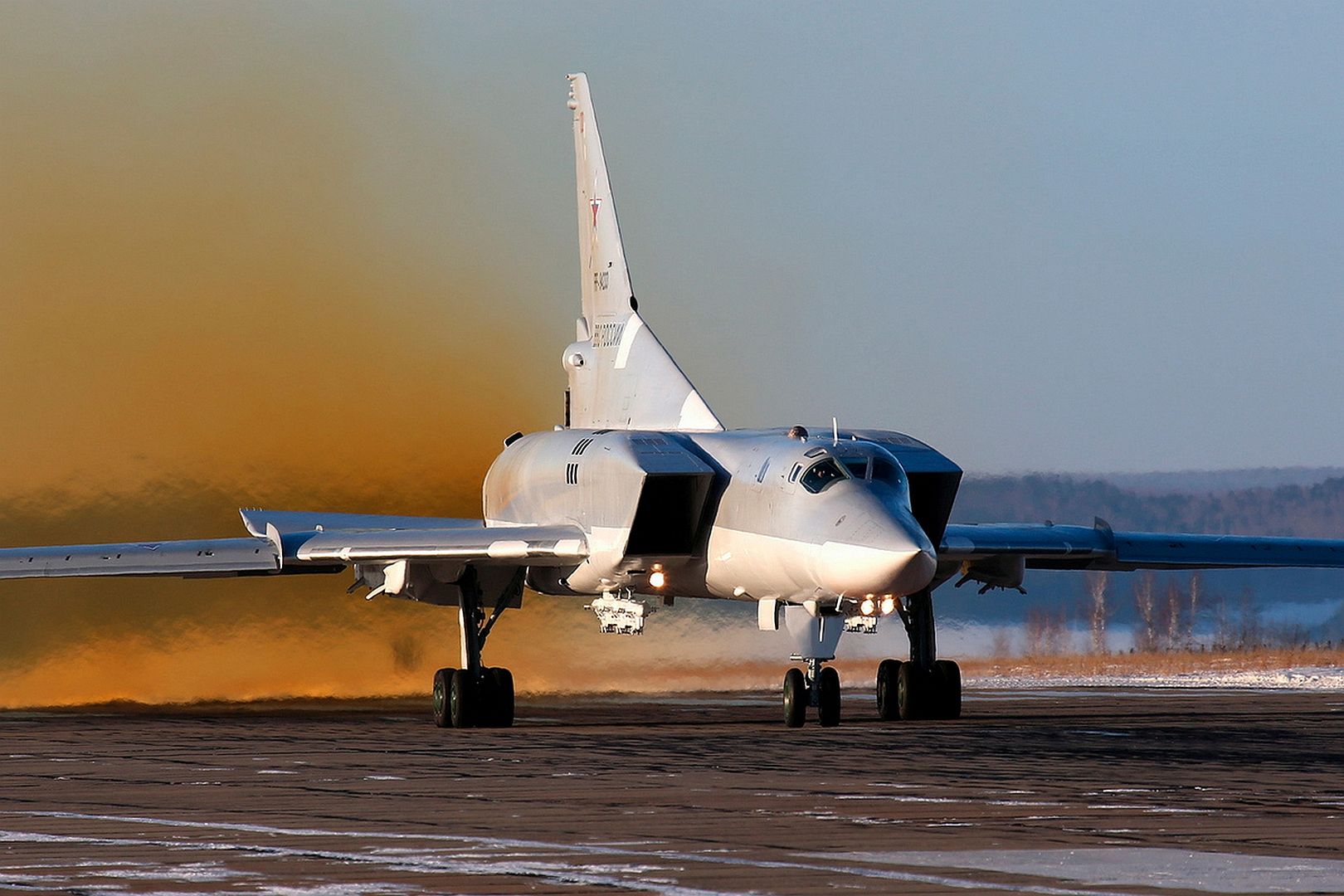
In total, more than 10 flight crews were involved in these events.
(Photos courtesy of the Ministry of Defence of the Russian Federation)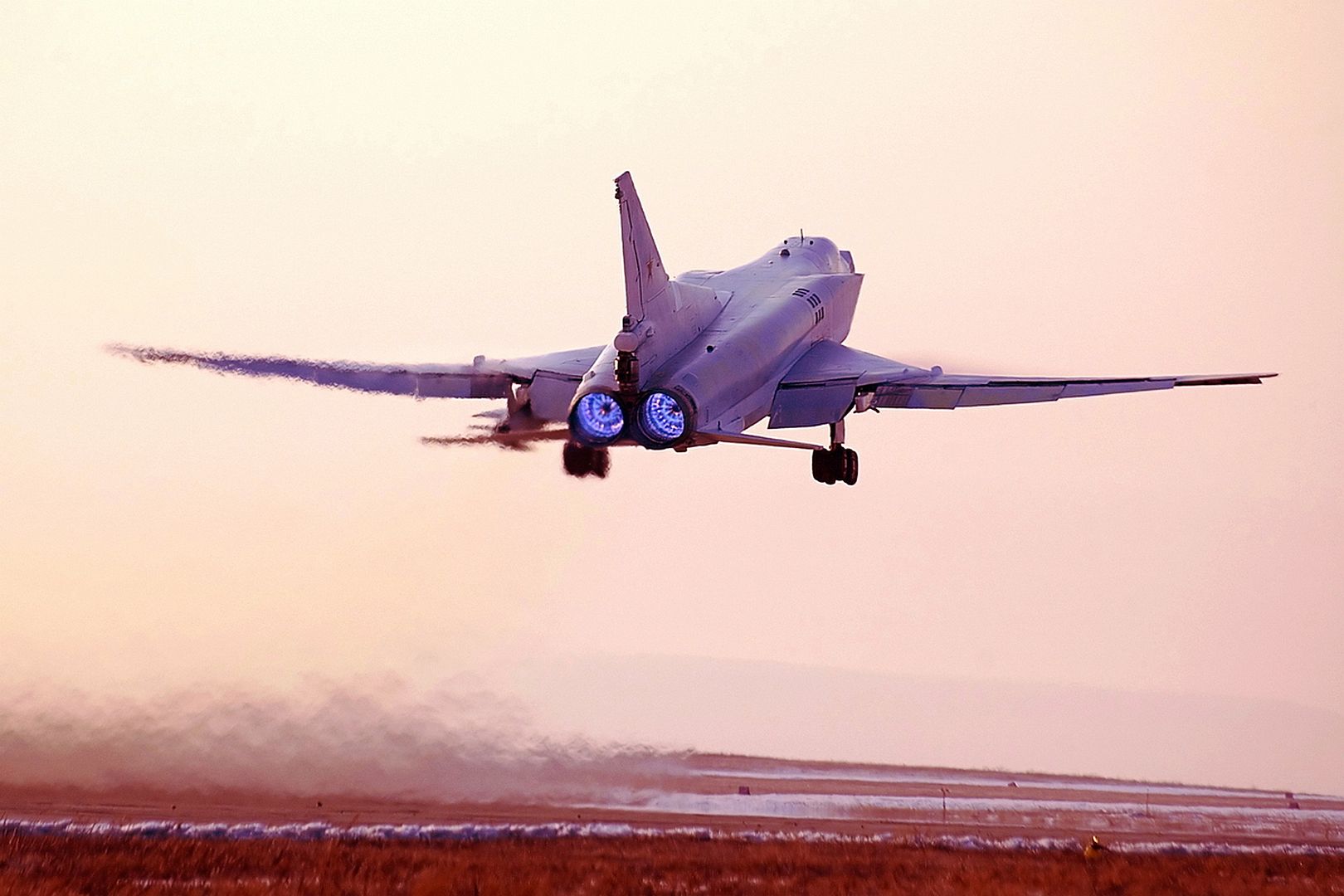
BALTIMORE – Nov. 18, 2021 – The Air National Guard has flown the Northrop Grumman Corporation (NYSE: NOC) AN/ASQ-236 Dragon’s Eye Active Electronically Scanned Array (AESA) radar pod on an operational F-16 for the first time. The Air Force intends to deploy the pod operationally to both its Guard and Reserve F-16 fleets.
“The addition of the Dragon’s Eye to the F-16 Viper is a force multiplier, enabling warfighters to detect, track, identify and target faster in theater,” said Susan Bruce, vice president, advanced mission capabilities, Northrop Grumman. “This pod is rapidly adaptable to new platforms and it features advanced radar modes that can be shared across our fifth-generation radar portfolio.”
The AN/ASQ-236 Dragon's Eye pod is already operational on the U.S. Air Force F-15E Strike Eagle. It can be integrated on both large and fighter-sized platforms. Northrop Grumman has previously integrated the AN/ASQ-236 pod on an Air Force Special Operations Command AC-130 gunship and Air Force Global Strike Command B-52 bomber during a proof of concept demonstration.
The AN/ASQ-236 Dragon's Eye radar pod is a tactical Ku-band AESA radar surveillance pod that provides aircrew with all-weather, multi-target detection, track and engagement capability. Northrop Grumman’s sensors and electronic warfare systems give warfighters superiority across the spectrum and allow for faster, more informed decisions.
Northrop Grumman is a technology company, focused on global security and human discovery. Our pioneering solutions equip our customers with capabilities they need to connect, advance and protect the U.S. and its allies. Driven by a shared purpose to solve our customers’ toughest problems, our 90,000 employees define possible every day.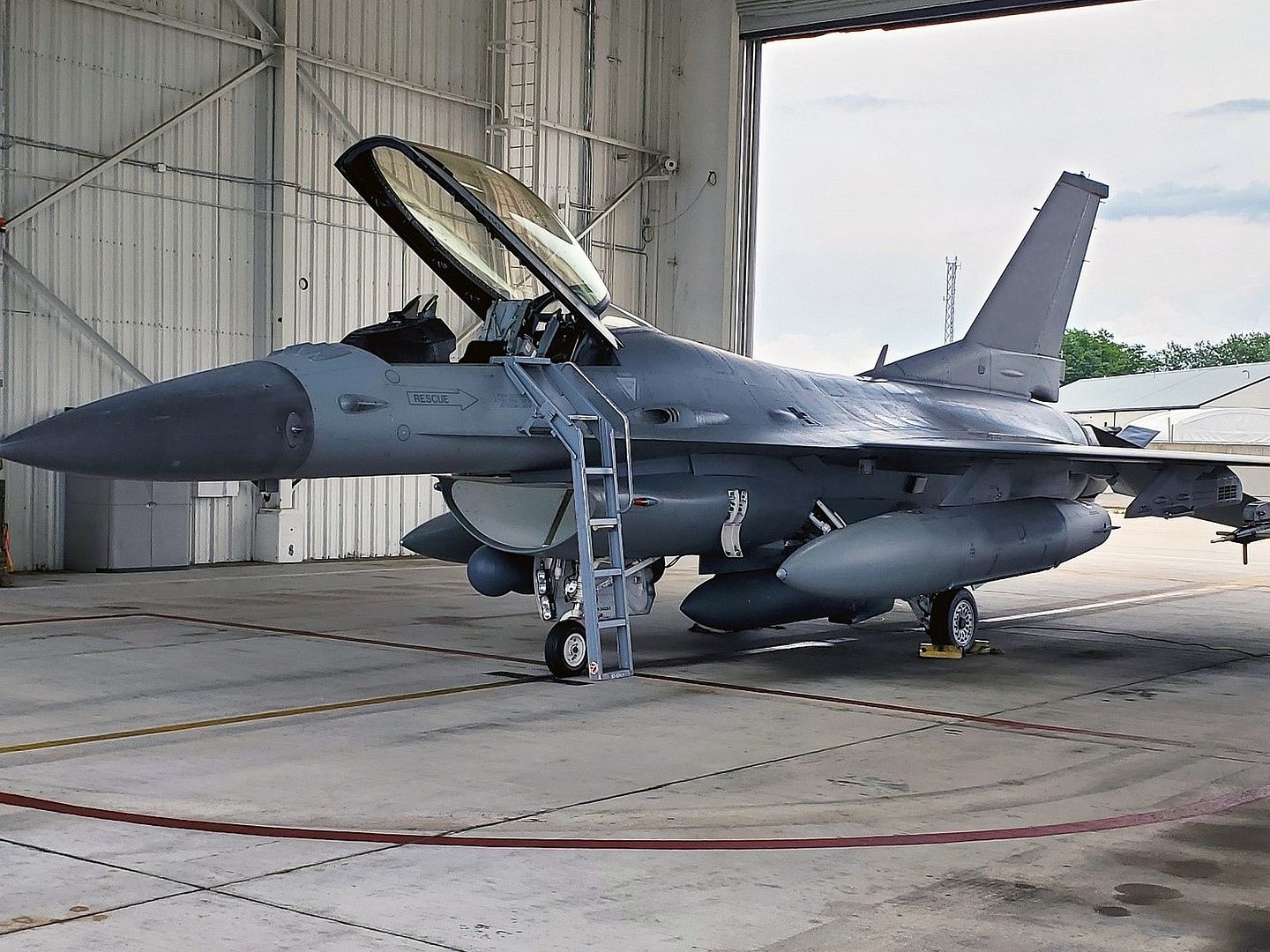
Dubai, 18 November 2021 – The Indonesia Ministry of Defence has placed an order for two Airbus A400M aircraft in multirole tanker and transport configuration.
The contract, which will become effective in 2022, will bring the total number of A400M operators to ten nations. The agreement includes a complete maintenance and training support package. A Letter of Intent was also signed for the future acquisition of four additional A400M aircraft.
”This new order will further expand the A400M footprint in the Asia-Pacific region. The A400M offers outstanding capabilities to Indonesia, providing its air force with the perfect platform to deliver large and heavy loads into remote areas and multiplying its airpower projection thanks to reliable aerial refuelling capabilities,” said Michael Schoellhorn, CEO of Airbus Defence and Space.
Capable of operating from rough and short runways, the A400M will strengthen the Indonesian Air Force’s airlift capabilities to rapidly respond to any crisis, demonstrated in the aftermath of the earthquake and subsequent tsunami that struck the country in 2018. The A400M was the first large airlifter able to deliver heavy loads like fuel trucks and excavators as well as food, clothes and medical supplies using a damaged and short runway in Palu (Central Sulawesi, Indonesia).
“The A400M is a truly multi-role platform and will greatly enhance the Indonesian Air Force’s tactical air-to-air capabilities. This aircraft will play a key role in other key missions including paratrooping and heavy cargo transportation. We are also looking at additional A400M acquisition in the near term, with future A400M developments such as firefighting an important capability we are exploring jointly with Airbus. The A400M will become a national asset and the cornerstone for Human Assistance and Disaster Response missions, beyond its tactical and air-to-air capabilities,” said Prabowo Subianto, Minister of Defence of the Republic of Indonesia.
The A400M can carry heavy and outsize loads across strategic distances, deliver these into tactical locations, while offering the added aerial refuelling capability. An ideal solution to meet air forces’ multirole tanker and transport aircraft requirements.
With the ability to fly fast and at high and extremely low altitudes, the A400M is the ideal platform for refuelling fighter and other major aircraft by means of two underwing refuelling pods. Its built-in air-to-air refuelling capability allows rapid reconfiguration as a tanker, making it easily adaptable to changing operational scenarios and missions. This adaptability is unique to the A400M, which can itself also be refuelled in flight.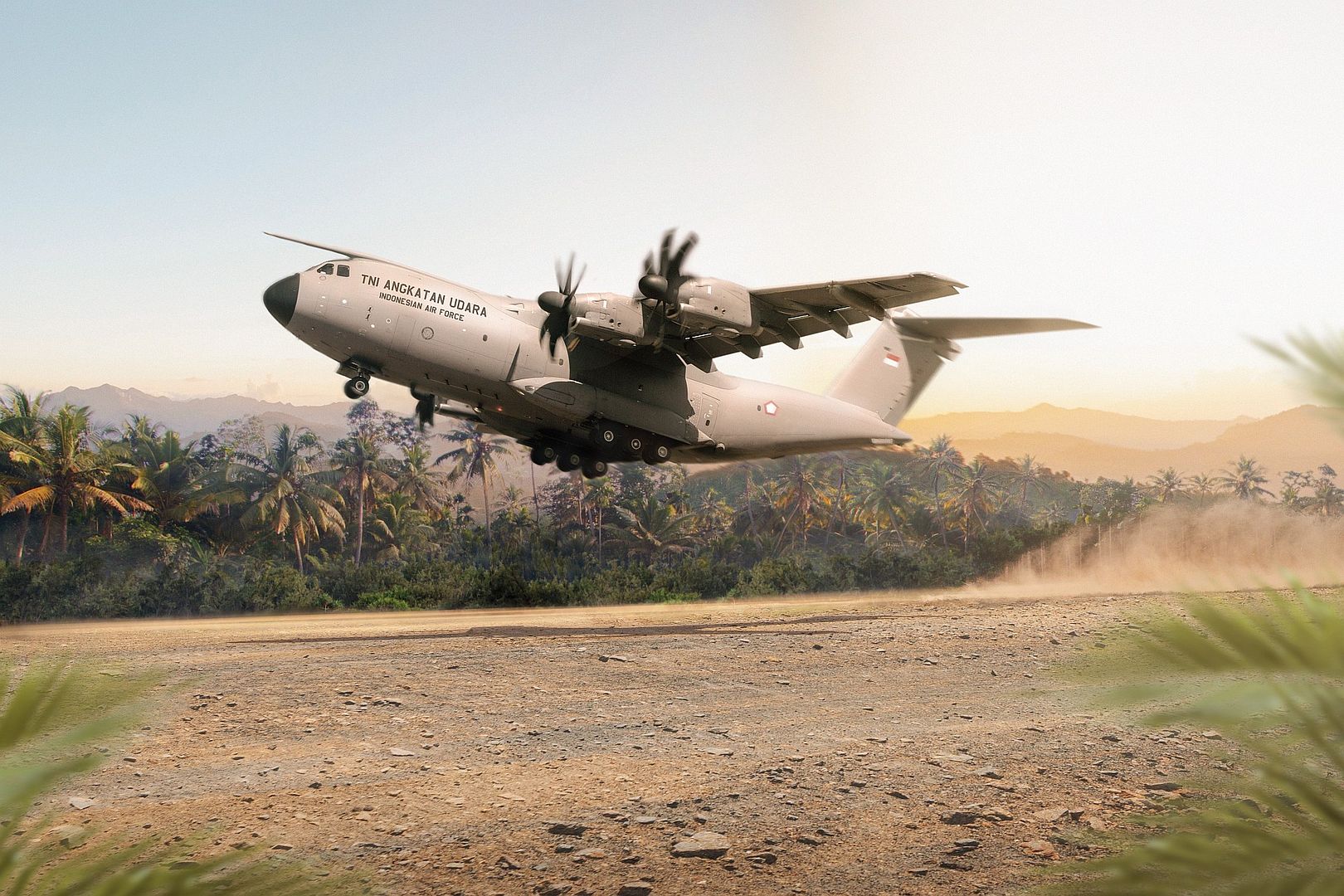
Cologne, Germany (18 Nov. 2021) – Bell Textron Inc., a Textron Inc. (NYSE:TXT) company, announced today the sale of the first Bell 505 NXi in Slovakia to WELLPHARMA S.R.O., marking the second Bell 505 sale in the country in 2021. The customer will take delivery of the aircraft in summer 2022 at Bell’s Prague Service center. The corporate-configured Bell 505 will be equipped with the latest Garmin G1000 NXi avionics and used for corporate and private transportation.
“Since receiving EASA certification at the end of 2020, Bell is thrilled to include the Garmin G1000 NXi integrated avionics suite as standard equipment in every new Bell 505, as well as retrofit for existing Bell 505s,” said Duncan Van De Velde, managing director, Europe and Russia, Bell. “The Garmin G1000H NXi Flight Deck enhances the world-class short light single aircraft with heightened situational awareness, faster information processing and upgraded displays to decrease pilot workload and add to in-flight experience.”
Bell has delivered more than 60 Bell 505s in the Europe to customers in Montenegro, Italy, Switzerland and more. The company continues to grow its regional presence and complete sales in developing rotorcraft markets like Slovakia. In addition to its broad customer base, Bell’s Prague facility offers regional operators accessible maintenance, repair and overhaul options to ensure fleets are mission-ready.
Combining the latest Garmin avionics and dual channel FADEC-controlled engine, the Bell 505 NXi aircraft offerings can include dual core processors to reduce boot time by more than 50%, LED backlit and improved displays, Easy LRU replacement via automatically loaded software recognition, VFR/IFR charts available via the multifunction display (MFD), Enhanced Horizontal Situation Indicator (HIS) with map and traffic and terrain overlays..jpg?width=1920&height=1080&fit=bounds)
SEATTLE, Nov. 18, 2021 – The Norwegian Defence Materiel Agency (NDMA) today accepted the first of five Boeing [NYSE: BA] P-8A Poseidon maritime patrol aircraft that will be operated by the Royal Norwegian Air Force (RNoAF).
“Norway is responsible for large maritime areas in a strategically important part of the world, and the new P-8A Poseidon will represent a tremendous improvement in our ability to both protect our sovereignty and understand developments in these areas. Today's delivery of our first P-8A is an important milestone in the modernization of Norway’s maritime patrol aircraft capability,” said Mette Sørfonden, director general of the Norwegian Defence Materiel Agency. “I’m very pleased that the NDMA will soon be able to provide the Norwegian Armed Forces with a whole new generation of aircraft that will play an important role in preserving our national security for many years to come.”
Norway's first P-8A aircraft, named Vingtor, was delivered to the NDMA during a ceremony at the Museum of Flight in Seattle, Washington. The milestone comes four years after the NDMA entered into an agreement with the U.S. Navy for the P-8A, and two years before the new aircraft are scheduled to begin taking over maritime patrol duties in Norway’s high north.
“We’re honored to provide this unmatched, multimission maritime patrol capability to Norway,” said Stu Voboril, vice president and program manager, P-8 Programs. “Norway joins seven other global customers that have selected or already operate the P-8 and benefit greatly from its long-range maritime surveillance and anti-submarine warfare capabilities. We look forward to enhancing our continued and enduring partnership with the U.S. Navy and the Royal Norwegian Air Force, and supporting the future fleet’s sustainment and training needs.”
Norway’s four remaining aircraft are all in advanced stages of production and will be delivered to the NDMA in 2022. The five P-8As will replace the RNoAF current fleet of six P-3 Orions and two DA-20 Jet Falcons and will be operated by 333 Squadron at Evenes Air Station.
Norwegian companies Nammo, Kongsberg Defence & Aerospace, Andoya Space and Berget currently have agreements with Boeing that are part of a tailored industrial cooperation plan related to Norway’s acquisition of five P-8A aircraft. Boeing continues to work with the NDMA and Norwegian industry to expand that plan and support economic growth throughout Norway.
The delivery to Norway also marks the 142nd P-8 aircraft delivered to global customers, including the U.S. Navy, the Royal Australian Air Force, the Indian Navy and the United Kingdom’s Royal Air Force. First deliveries to New Zealand, Korea and Germany will take place in 2022, 2023 and 2024 respectively.
To date, the global operating P-8 fleet has amassed more than 400,000 mishap-free flight hours. The P-8 is a long-range anti-submarine warfare, anti-surface warfare, intelligence, surveillance and reconnaissance aircraft capable of broad-area, maritime and littoral operations. In addition, the P-8 performs humanitarian and search and rescue missions around the globe.
As a leading global aerospace company, Boeing develops, manufactures and services commercial airplanes, defense products and space systems for customers in more than 150 countries. As a top U.S. exporter, the company leverages the talents of a global supplier base to advance economic opportunity, sustainability and community impact. Boeing’s diverse team is committed to innovating for the future and living the company’s core values of safety, quality and integrity.
-
 Main AdminA KC-130J assigned to Marine Aerial Refueler Transport Squadron (VMGR) 252 lands at Marine Corps Auxiliary Landing Field (MCALF) Bogue, North Carolina, Nov. 18, 2021. The event was a demonstration of expeditionary advanced base operations concepts to illustrate the capabilities of 2nd Marine Aircraft Wing as a result of the Commandant of the Marine Corps' force design. The demonstration marks the first time East Coast F-35 air delivery ground refueling and other F-35 operations have been conducted at MCALF Bogue. (U.S. Marine Corps photos by Lance Cpl. Lauren Salmon)
Main AdminA KC-130J assigned to Marine Aerial Refueler Transport Squadron (VMGR) 252 lands at Marine Corps Auxiliary Landing Field (MCALF) Bogue, North Carolina, Nov. 18, 2021. The event was a demonstration of expeditionary advanced base operations concepts to illustrate the capabilities of 2nd Marine Aircraft Wing as a result of the Commandant of the Marine Corps' force design. The demonstration marks the first time East Coast F-35 air delivery ground refueling and other F-35 operations have been conducted at MCALF Bogue. (U.S. Marine Corps photos by Lance Cpl. Lauren Salmon)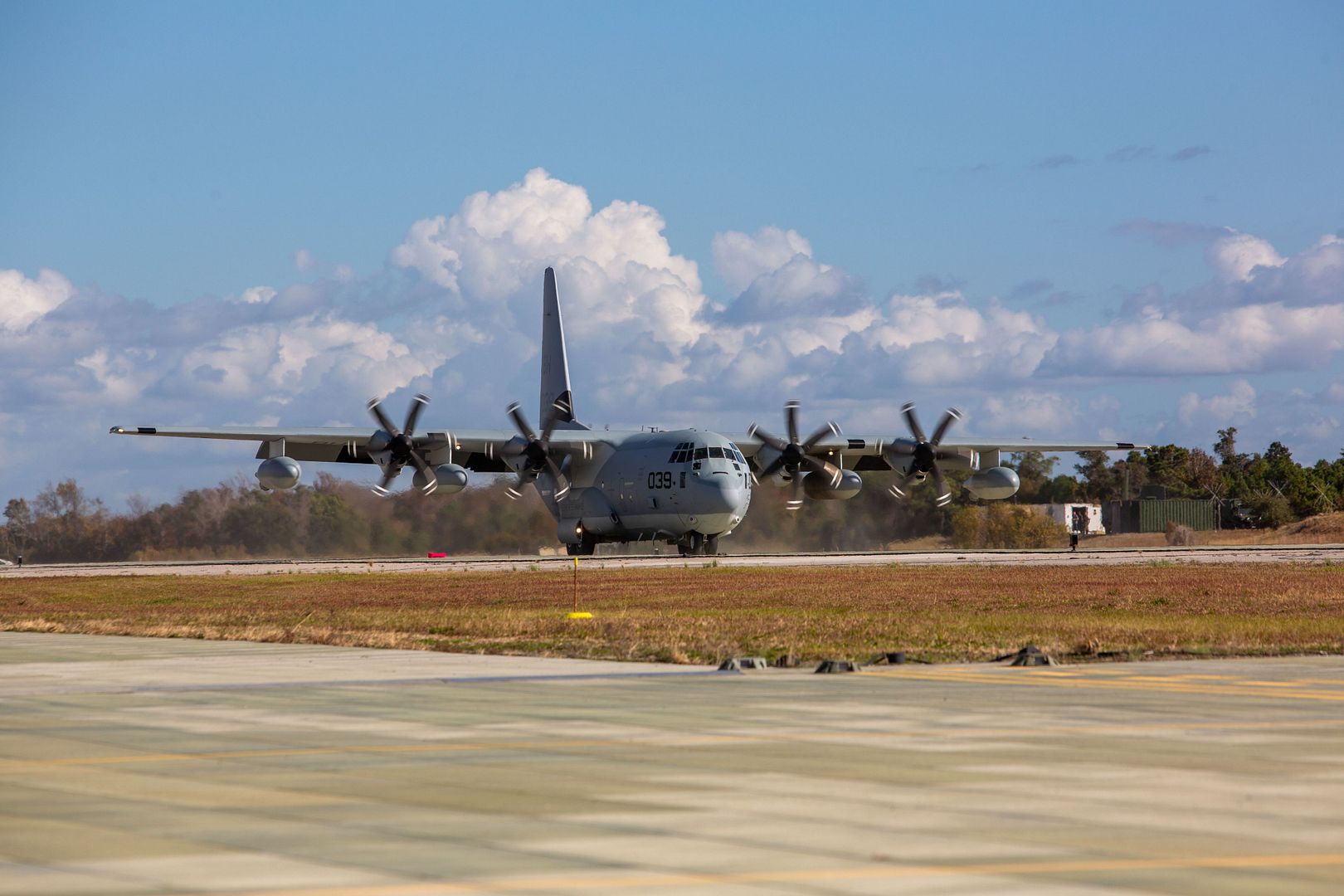


A 114th Fighter Wing F-16C Fighting Falcon is parked on the flightline prior to evening sortie during night flying at Joe Foss Field, S.D. Nov. 18, 2021. South Dakota Air National Guard Pilots and maintainers are required to conduct evening operations as part of their overall readiness. (U.S. Air National Guard photo by Tech. Sgt. Duane Duimstra)
PHILIPPINE SEA (Nov. 18, 2021) An F-35C Lightning II, assigned to the “Argonauts” of Strike Fighter Squadron (VFA) 147, launches from the flight deck of Nimitz-class aircraft carrier USS Carl Vinson (CVN 70), Nov. 18, 2021. Carl Vinson Carrier Strike Group is on a scheduled deployment in the U.S. 7th Fleet area of operations to enhance interoperability through alliances and partnerships while serving as a ready-response force in support of a free and open Indo-Pacific region. (U.S. Navy photo by Mass Communication Specialist 1st Class Tyler R. Fraser).jpg?width=1920&height=1080&fit=bounds)
Toulouse, 19 November 2021 – CMA CGM Group, a world-leader in shipping and logistics, and Airbus have signed a binding Memorandum of Understanding (MoU) for the purchase of four A350F freighter aircraft. The order, which is subject to finalisation in the coming weeks, will lift CMA CGM’s total Airbus fleet to nine aircraft, including five A330-200F.
The aircraft will be operated by CMA CGM AIR CARGO, the recently launched air cargo activity of CMA CGM Group.
“We are proud to welcome CMA CGM AIR CARGO in the group of operators for the A350F and we are equally pleased to support the company’s future strategic development,” said Christian Scherer, Airbus Chief Commercial Officer and Head of Airbus International. ”The A350F will fit seamlessly into the carrier’s existing fleet of Airbus freighters. Thanks to its composite airframe and latest technology engines, it will bring unbeatable efficiency in terms of fuel burn, economics and CO₂ emissions, empowering the long-term sustainable growth of the Group.” Scherer adds: “Having an early endorsement by such an international cargo powerhouse as the CMA CGM Group is very gratifying.”
The A350F is based on the world's most modern long range leader, the A350. The aircraft features a large main deck cargo door and a fuselage length optimised for cargo operations. Over 70% of the airframe is made of advanced materials resulting in a 30t lighter take-off weight, generating an at least 20% lower fuel burn over its current closest competitor. With a 109t payload capability (+3t payload/ 11% more volume than its competition), the A350F serves all cargo markets (Express, general cargo, special cargo…) and is in the large freighter category the only new generation freighter aircraft ready for the enhanced 2027 ICAO CO₂ emissions standards.
About CMA CGM:
The CMA CGM Group, a world leader in shipping and logistics headed up by Rodolphe Saadé, serves over 420 ports on 5 continents around the world. The Group’s fleet of 545 ships carried close to 21 million TEU (Twenty-foot Equivalent Unit) containers in 2020. With its CEVA Logistics subsidiary, a world-class logistics provider carrying 400,000 tons of air freight and 2.8 million tons of overland freight every year, and CMA CGM Air Cargo, the CMA CGM Group is constantly innovating to offer its customers end-to-end services delivering performance gains through ground-breaking shipping, overland, air freight and logistics solutions.
The CMA CGM Group is committed to leading the energy transition in shipping and has pioneered the use of alternative fuels. In addition, it has set itself the goal of being carbon-neutral by 2050. This program of continuous improvement has yielded concrete results and reduced the Group’s total CO₂ emissions by 4% in 2020.
With a network of over 400 offices and 750 warehouses in 160 countries, the Group employs more than 110,000 staff members worldwide, 2,400 of whom are based in Marseille where it has its registered office..jpg?width=1920&height=1080&fit=bounds)
18 November 2021,
Helitrans Pyrinees S.L. took delivery of its first Bell 429 in March 2021. Renowned for its class-leading capabilities and flexible platform, the Bell 429 has enabled the Spanish operator to expand into special missions such as search and rescue (SAR) and firefighting.
“The 429 was an easy decision for us. The spacious cabin, impressive mountain performance, cruise speed and tail rotor authority are essential for the Search and Rescue mission. Simply put, the faster you get to the victim, the higher the chances of saving their life,” said Pol Tomas, Chief Pilot, Helitrans Pyrinees.
“We have a public contract with the government of Catalonia, which requires twin engine aircraft for search and rescue missions. The 429 offers outstanding performance, the power limitations usually associated with using a twin-engine helicopter are eliminated.”
Helitrans Pyrinees has three pilots with a type rating for the Bell 429. All conducted training at the innovative Bell Training Academy in Valencia, which is home to a specialized 429 simulator.
While the aircraft is primarily used for search and rescue, Helitrans Pyrinees is also expanding into the firefighting mission as wildfires become more frequent and unpredictable in Spain. It is already using the 429 to transport firefighters to rescue people, and in the future, it will use the 429’s cargo hook to transport water for fire extinguishing.
Although based in Andorra-La Seu d’Urgell Airport, the Bell 429’s impressive range means Helitrans Pyrinees is able to cover a large area in Catalonia. For instance, the aircraft was contracted out to Tarragona (over 100 miles away) when flash flooding occurred there in September.
“Since we commenced our operations with the aircraft, our experience with the 429 and Bell has been exemplary. Bell is a pioneering company with a globally recognized reputation for product support, which has been key to the successful expansion of our operations,” said Alejandro Galarraga, CEO, Helitrans Pyrinees.
The Bell 429 is one of the most versatile twin engine helicopter platforms on the market. With more than 400 aircraft around the world and over 100 in Europe, the 429 has found popularity with police forces, air medical teams, militaries and corporate customers.
Post a reply
- Go to Next topic
- Go to Welcome
- Go to Introduce Yourself
- Go to General Discussion
- Go to Screenshots, Images and Videos
- Go to Off topic
- Go to Works in Progress
- Go to Skinning Tips / Tutorials
- Go to Skin Requests
- Go to IJAAF Library
- Go to Luftwaffe Library
- Go to RAF Library
- Go to USAAF / USN Library
- Go to Misc Library
- Go to The Ops Room
- Go to Made in Germany
- Go to Campaigns and Missions
- Go to Works in Progress
- Go to Juri's Air-Raid Shelter
- Go to Campaigns and Missions
- Go to Works in Progress
- Go to Skinpacks
- Go to External Projects Discussion
- Go to Books & Resources
